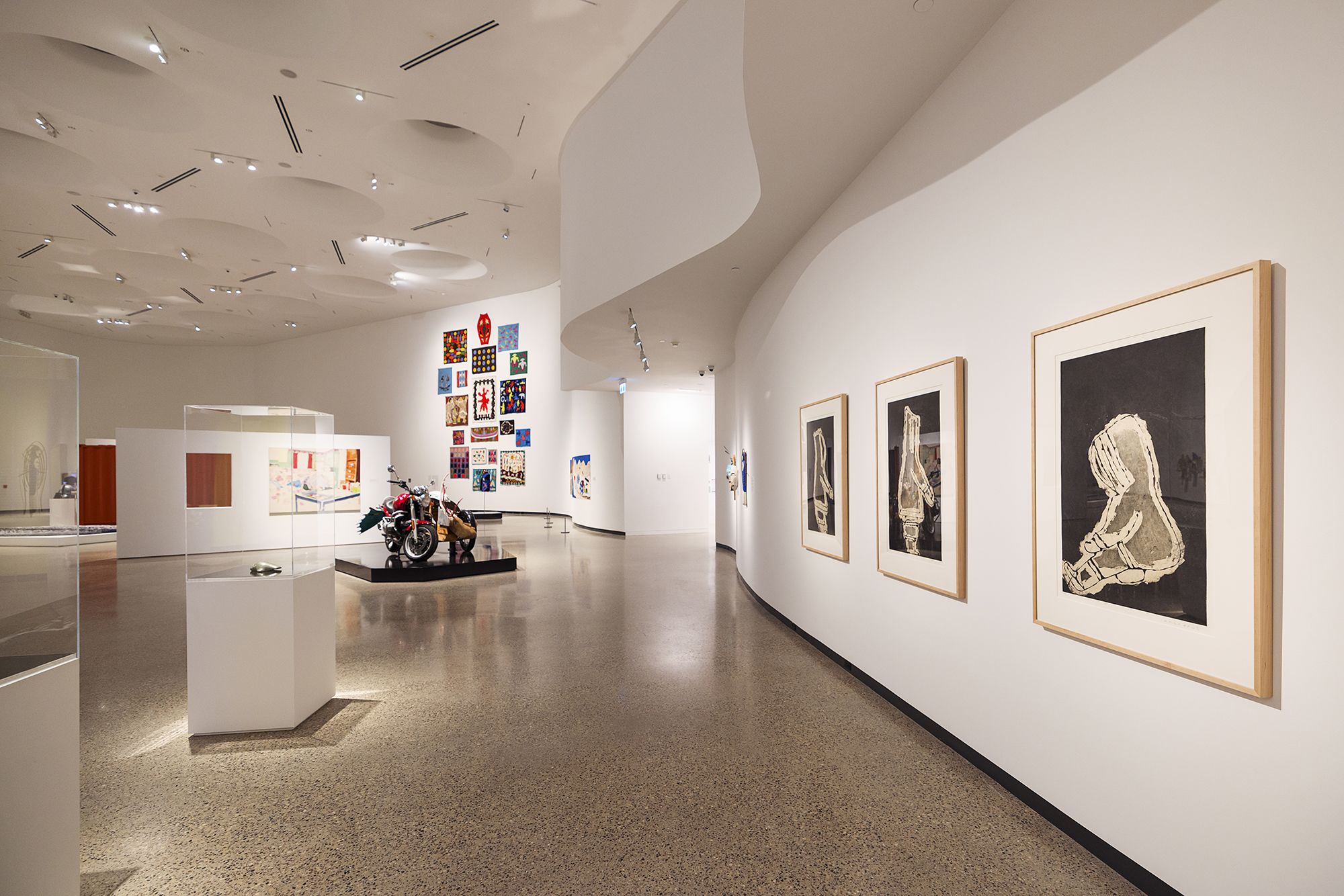A View From Here
Winnipeg, Manitoba
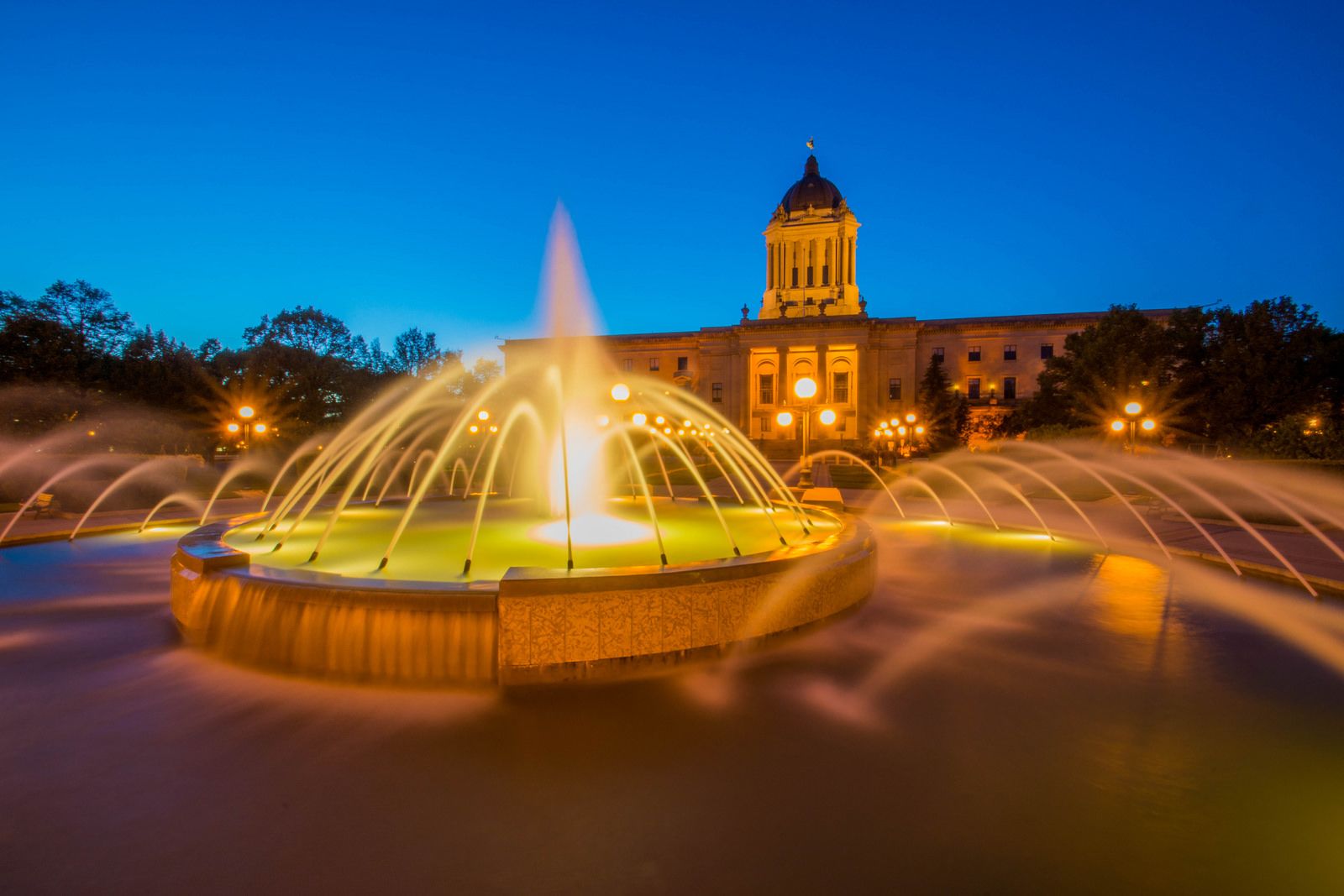
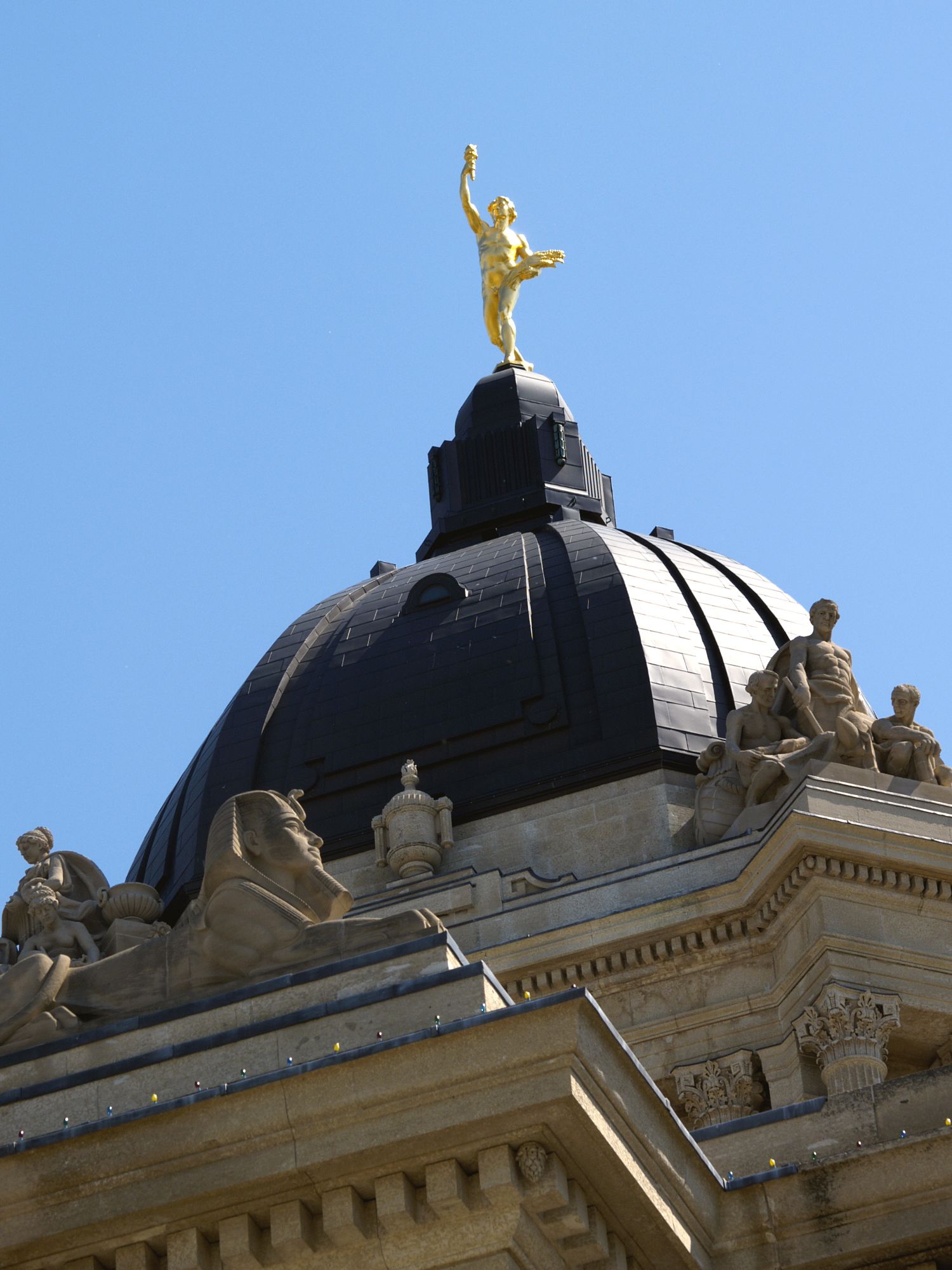
A provincial legislative building doesn't often inspire much excitement. But if there was ever a city that could make a mundane political hub interesting, it would be Winnipeg.
Secret codes? Hidden hieroglyphic inscriptions? A temple masquerading as a government building?
Yup, welcome to Winnipeg.
What makes a city great is a matter of opinion. But we believe you can't really get to know a place unless you spend time with its people.
In this series, A View From Here, we visit cities and communities around the country to hear the tales from those who live there.
These are the stories of Winnipeg.
Meet Don Finkbeiner
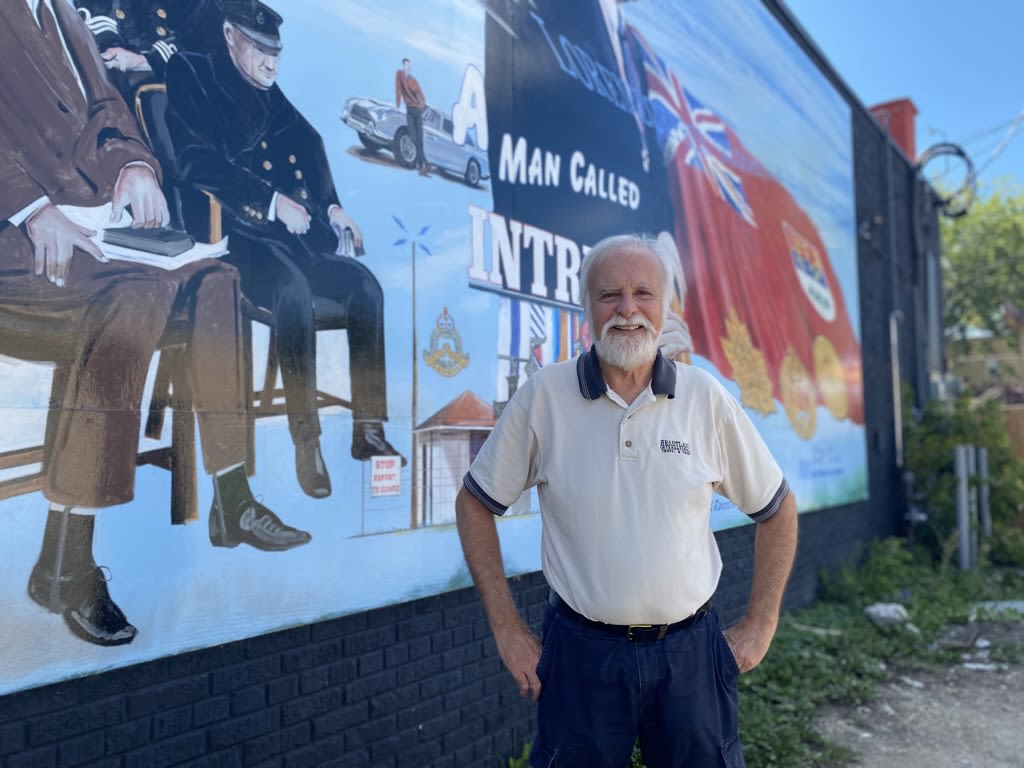
Ask Don about the "man called Intrepid" and he will happily tell you the story of the Winnipeger who inspired the character of James Bond.
As a local guide, Don is well versed in the history of the city and the famous people it has produced. But there's something special about William Stephenson, he says.
"He was the most incredible Winnipeger of all time, no one else comes close."
Listen to the full story:
The World-War-One-flying-ace-turned-secret-spy is now immortalized in a statue in downtown Winnipeg looking out over a patch of grass that leads to the Manitoba Legislature.
And speaking of the Legislature, Don is also the man to see if you want to know more about those secret messages contained within the building.
"It's really an incredible story," he says.
The Hermetic Code of the Manitoba Legislature
It all started with Dr. Frank Albo, an architectural historian who grew up in Winnipeg not that far from the Manitoba Legislature. Like most Winnipegers, he never took much notice of the large building.
One day, as Dr. Albo (then a student) was driving past the building something curious caught his eye: an Egyptian sphinx.
"He thought, what is a sphinx doing on a government building in Manitoba?"
It inspired him to research the depths of the symbolism. As it turned out, Dr. Albo had stumbled upon a century-old mystery that involved the Secret Society of the Freemasons.
Here's the story in Dr. Albo's own words:
For years, Dr. Albo conducted a tour of the building himself but has since moved on. The job has now fallen to Don, whose passion for the tale might just rival that of Dr. Albo.
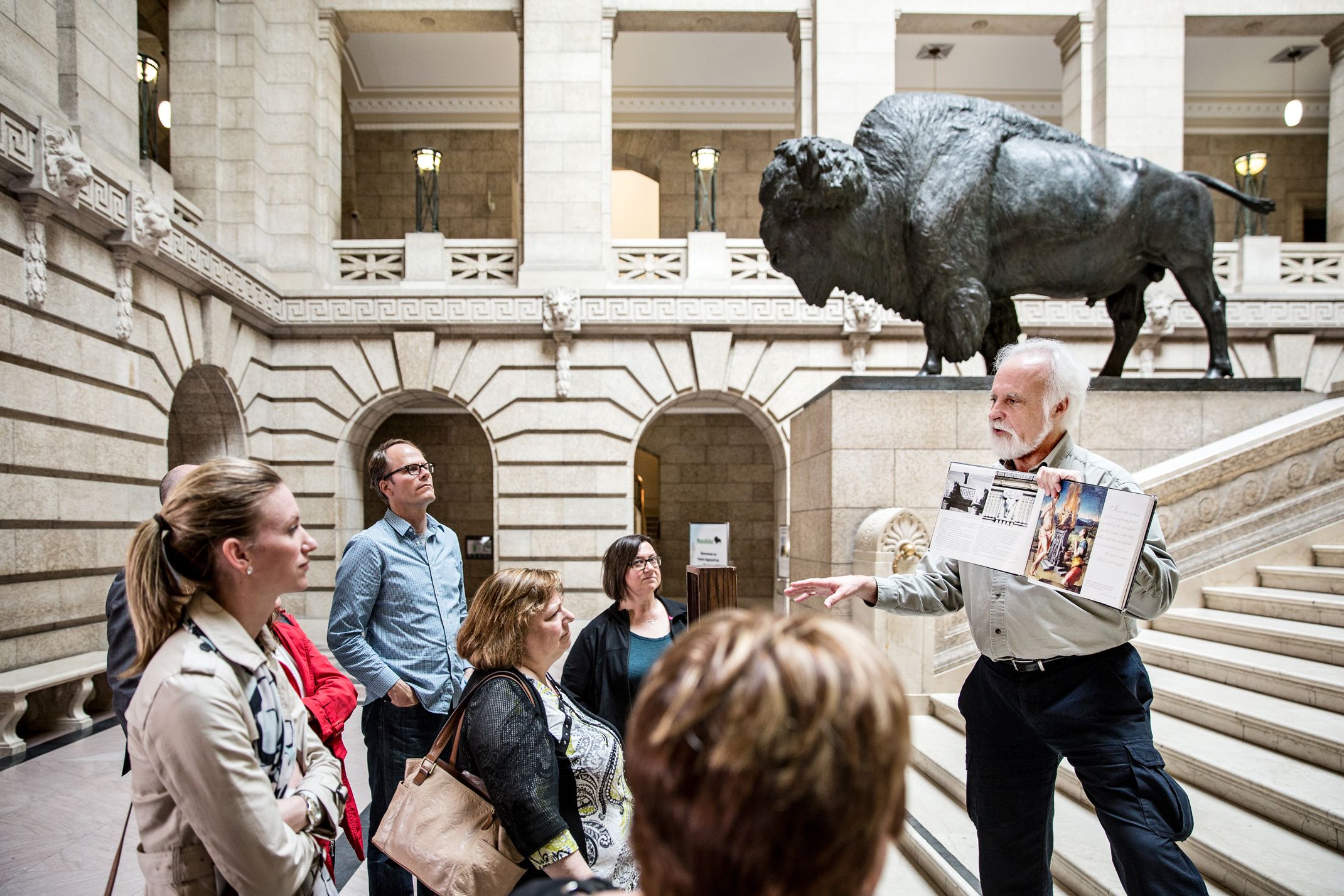
Don giving a Hermetic Code Tour of the Legislature. Photo by William Au/Tourism Winnipeg
Don giving a Hermetic Code Tour of the Legislature. Photo by William Au/Tourism Winnipeg
One of the Legislature's best-known symbols is the Golden Boy that shines from atop the building.
He faces north, torch raised in one hand and a bundle of wheat in the other. The boy represented in the statue is Hermes, the Greek god of prosperity and entrepreneurship. He is also the god associated with journeys and crossroads. Fitting for a place that has long been a meeting spot for nations.
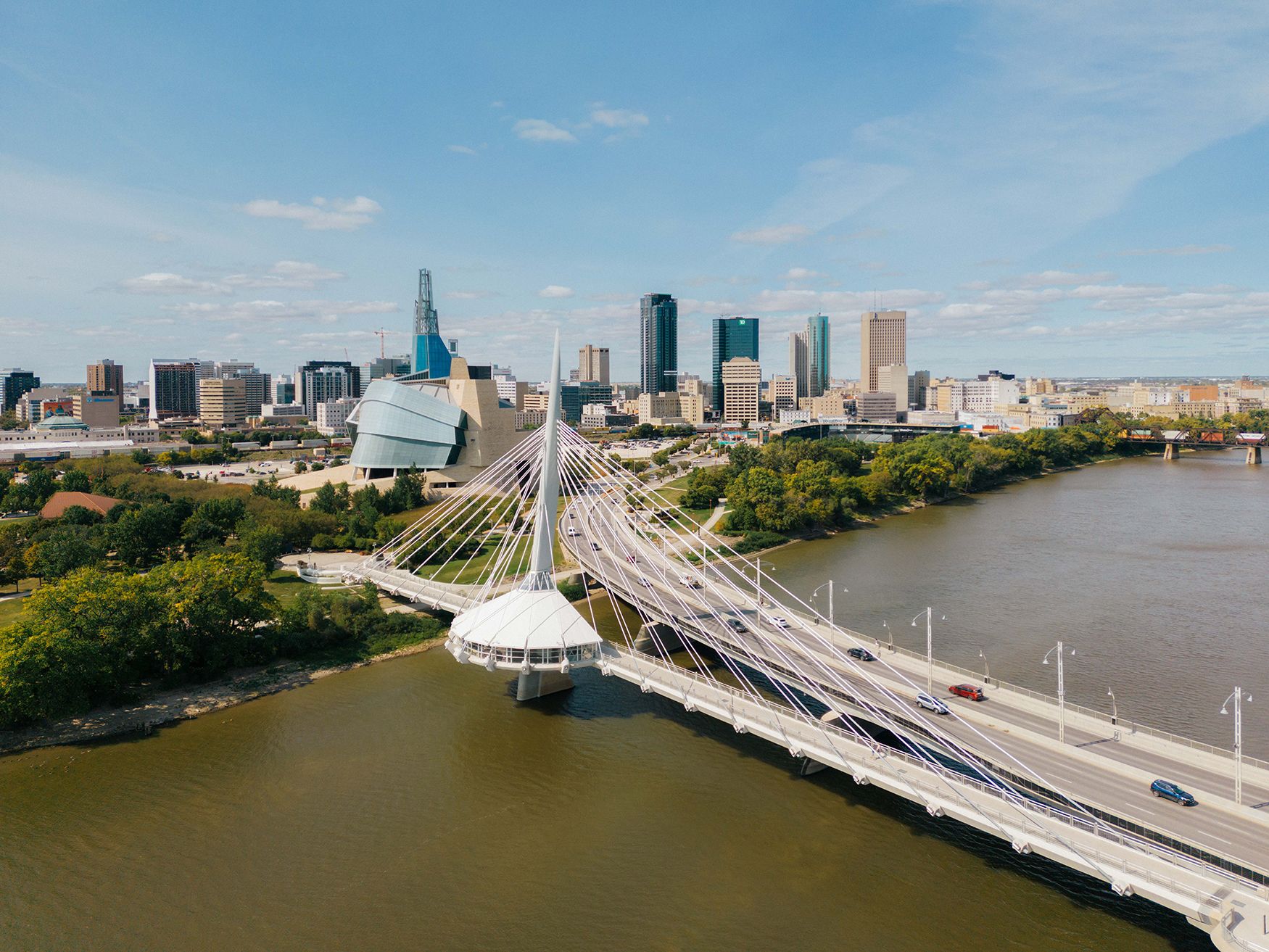
The name Winnipeg comes from the Cree word winipīhk, which means murky waters. The city grew up around the spot where the Red and Assiniboine Rivers meet, now called The Forks.
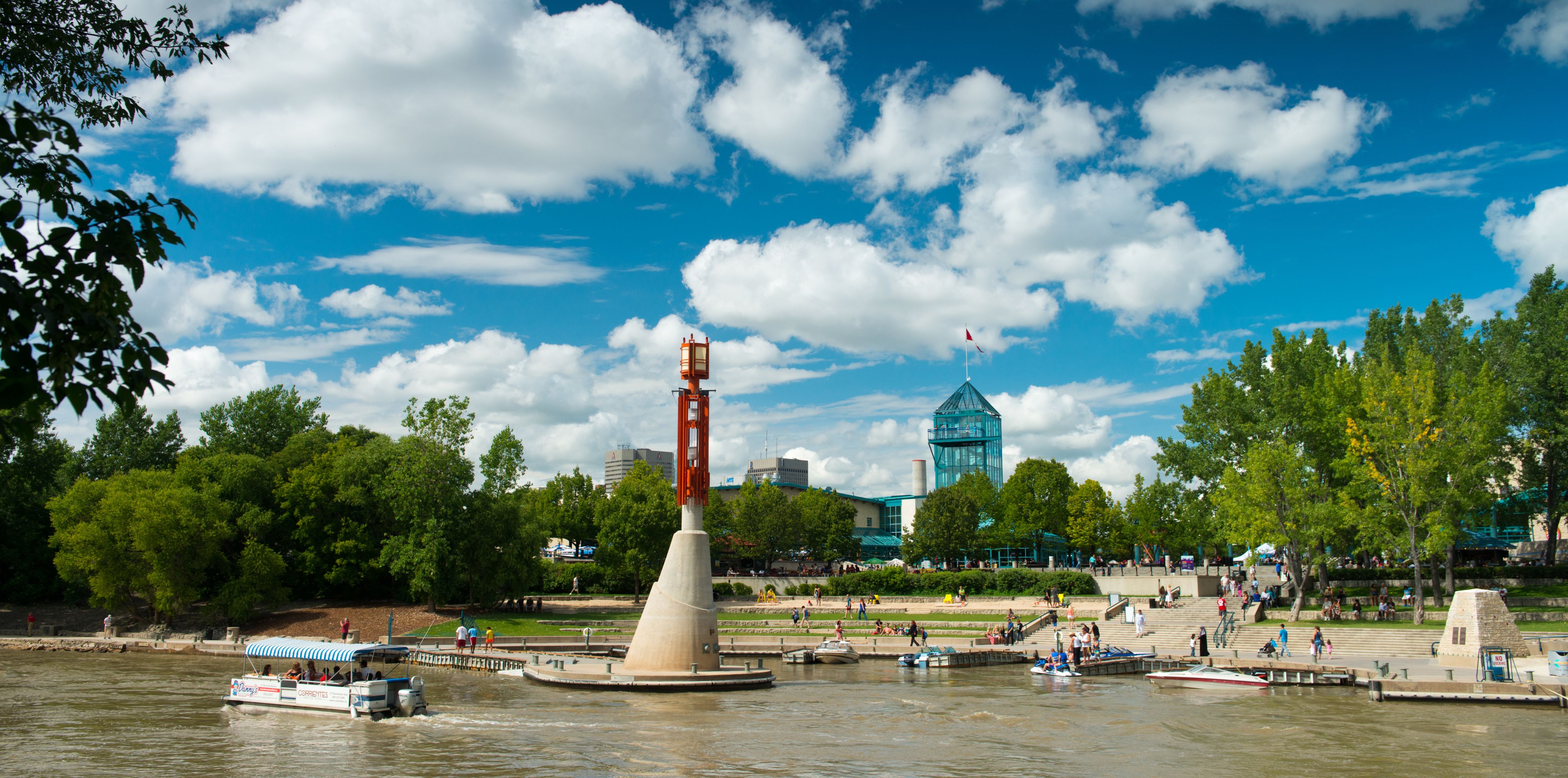
Photo: Dan Harper/Tourism Winnipeg
Photo: Dan Harper/Tourism Winnipeg
Archaeological evidence shows that Indigenous peoples were active at the Forks for at least 6,000 years. Recovered artifacts show a record of occupation at the location by the Cree, Anishinaabe, Nakoda and Dakota people.
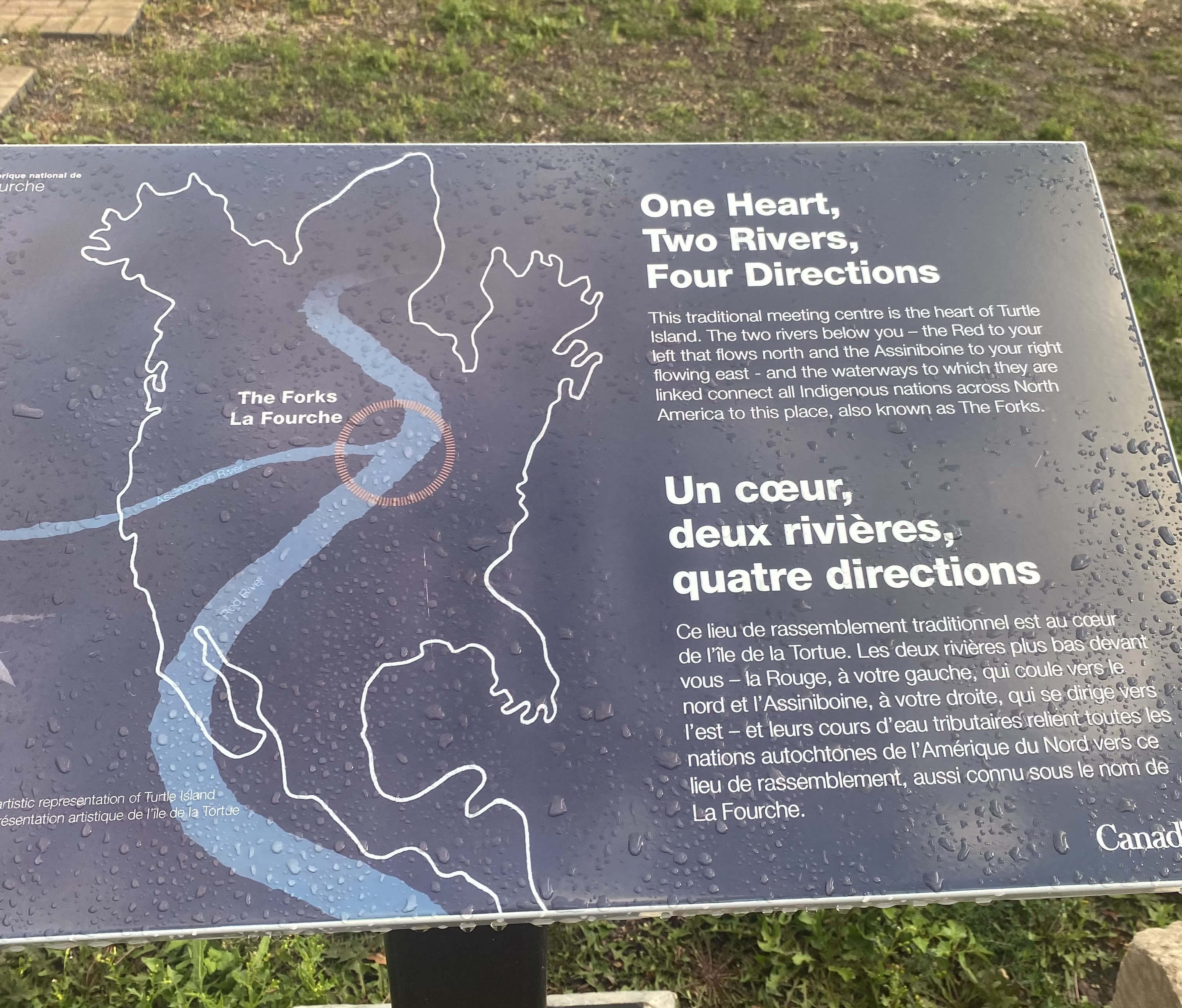
The Forks was used as a meeting hub during the fur trade and was one of the key sites for railroad development in the 1880s. As the gateway to the Canadian West, Winnipeg saw a lot of immigration and the Forks were central to their arrival by rail.
Today, the Forks continues to be a meeting place for families, friends, and community. When I arrived on a warm Sunday afternoon, the market was filled with families eating at long tables, friends meeting for drinks, and people just shopping for local goods.
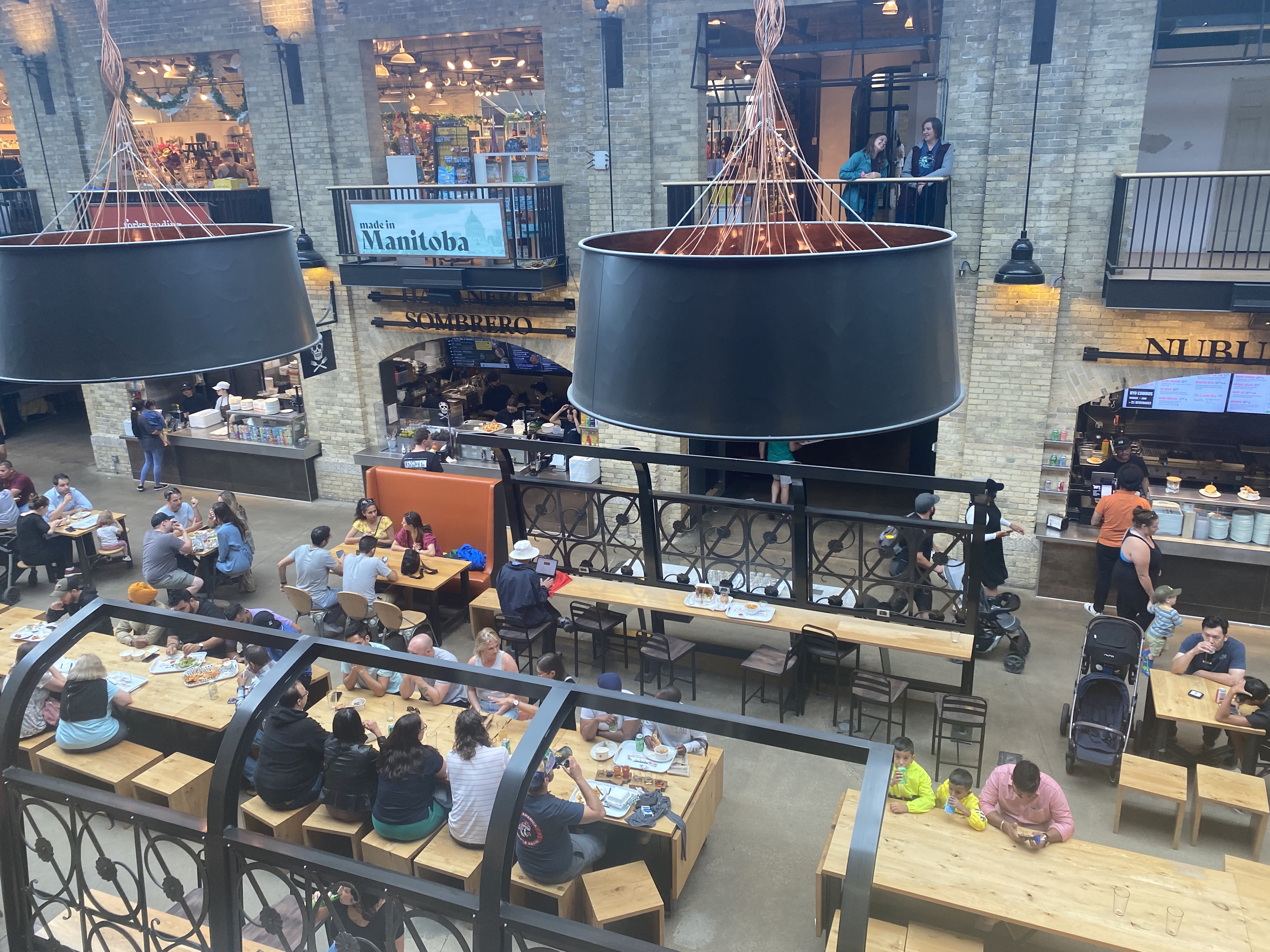
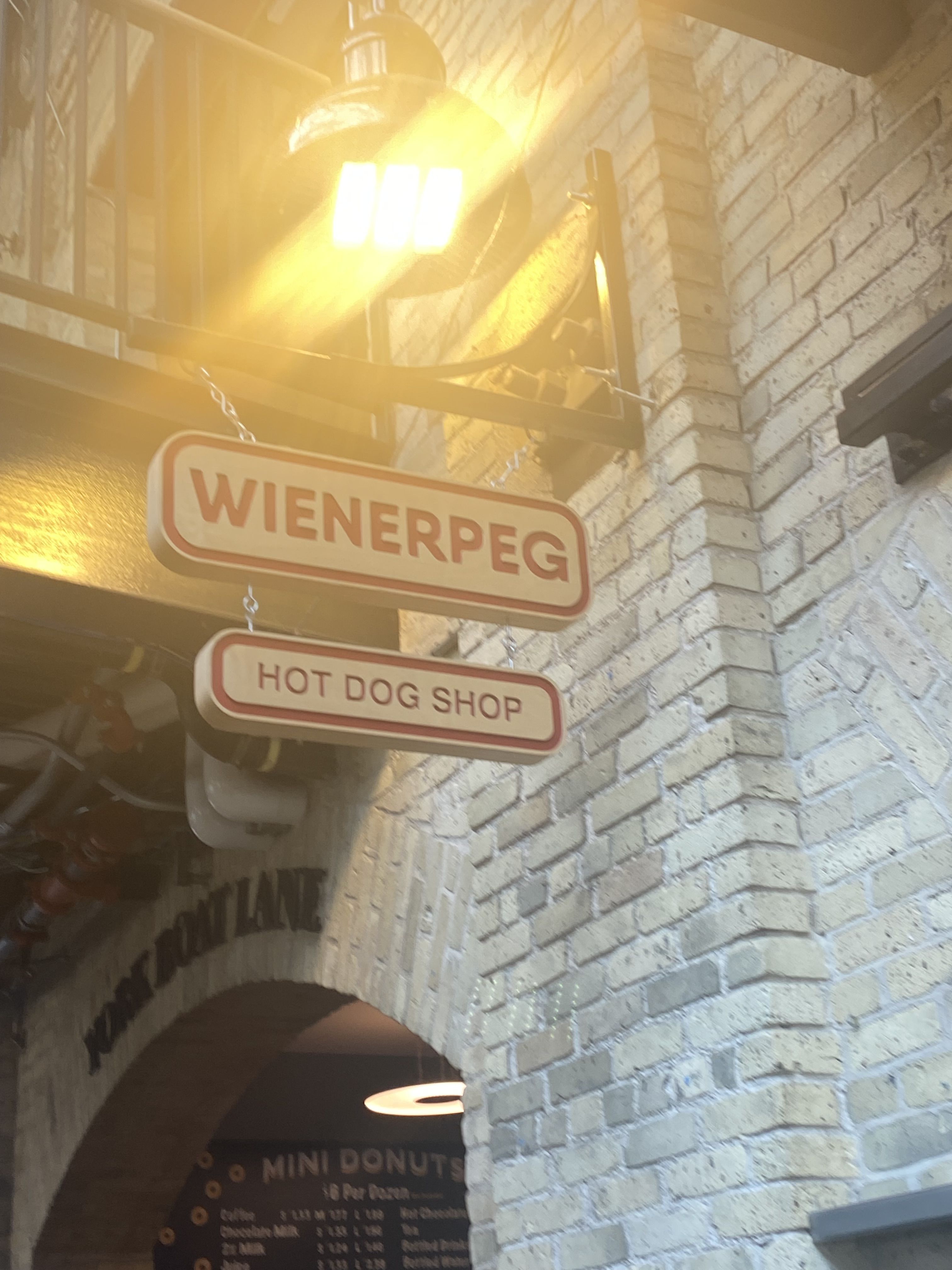
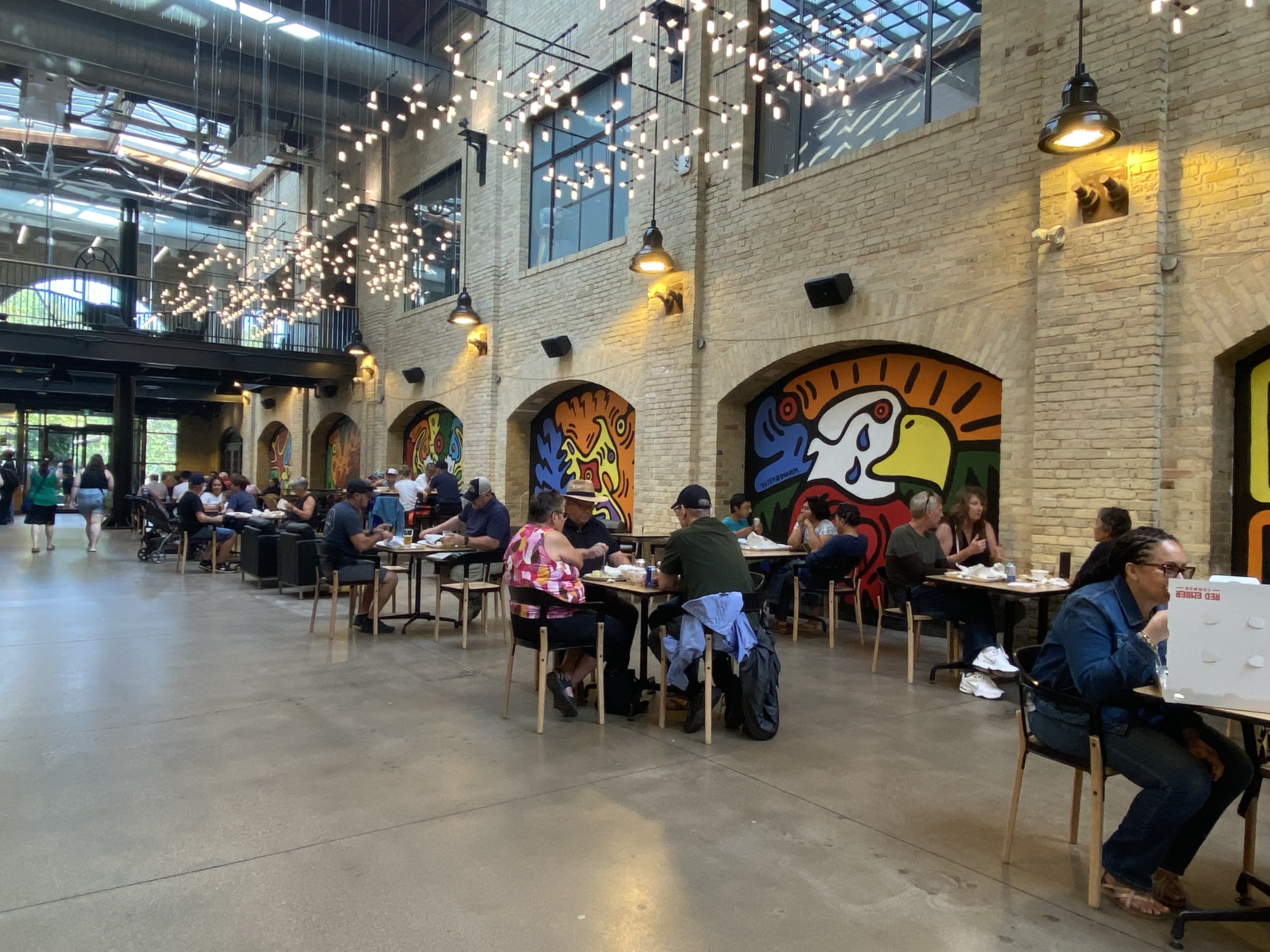





Meet Chef Mandel Hitzer

I arrive half an hour late for my lunch with Chef Mandel Hitzer. It was a mix-up of place: I had gone to his deer + almond location in the historic Exchange District, but he was waiting for me at his d+a cafe in the Polo Park Mall.
No matter, he says, waving away my apologies and proceeding to feed me a lunch of Manitoba beets and oranges salad with goat's cheese, a delicate beef carpaccio, and one of the best chips and onion dips I've ever had.
And an incredible pavlova for dessert.
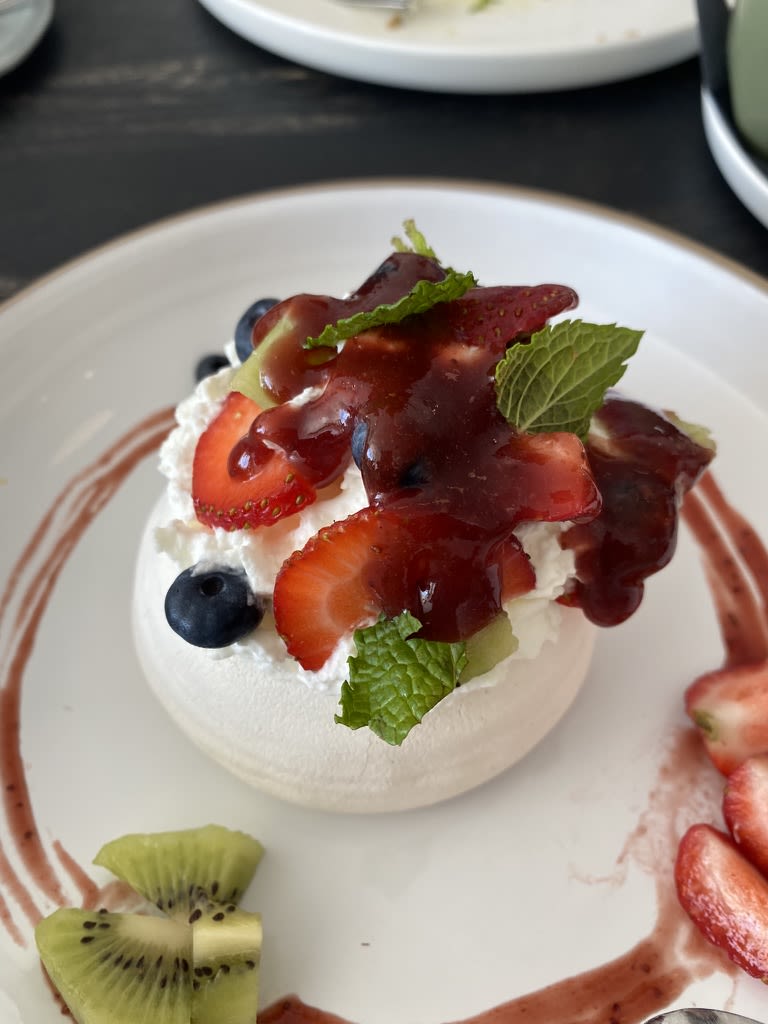
I am still dreaming about the complexities and pure delight of his legendary onion dip. Apparently, the secret to success is dehydrating sautéed onions but, really, I'd rather just return to Winnipeg and leave it to the pro.
"Winnipeg's always been home to me," Mandel says. "But I find whenever I leave the city I get so inspired to come home and cook for my people. Food is a common language we all share."
Listen to Mandel speak about what inspired him to become a chef:
Mandel's deer + almond restaurant has been a huge success in Winnipeg, garnering praise from locals and visiting celebrities. The name plays off his first name, which means almond in German.
But I'm most fascinated to hear about his incredibly creative winter project, Raw Almond.
During the coldest weeks of the year (and this is in Winnipeg, which has the coldest winters of any major Canadian city) he opens up an outdoor restaurant on the frozen Assiniboine River. A temporary structure is put up right on the ice and chefs from all over North America, as well as local Winnipeg chefs, create menus and cook to a sold-out dining room.
It sounds incredible enough that it might even tempt me to venture to Winnipeg in the middle of February — but only if Mandel promises to make me more of that onion dip.
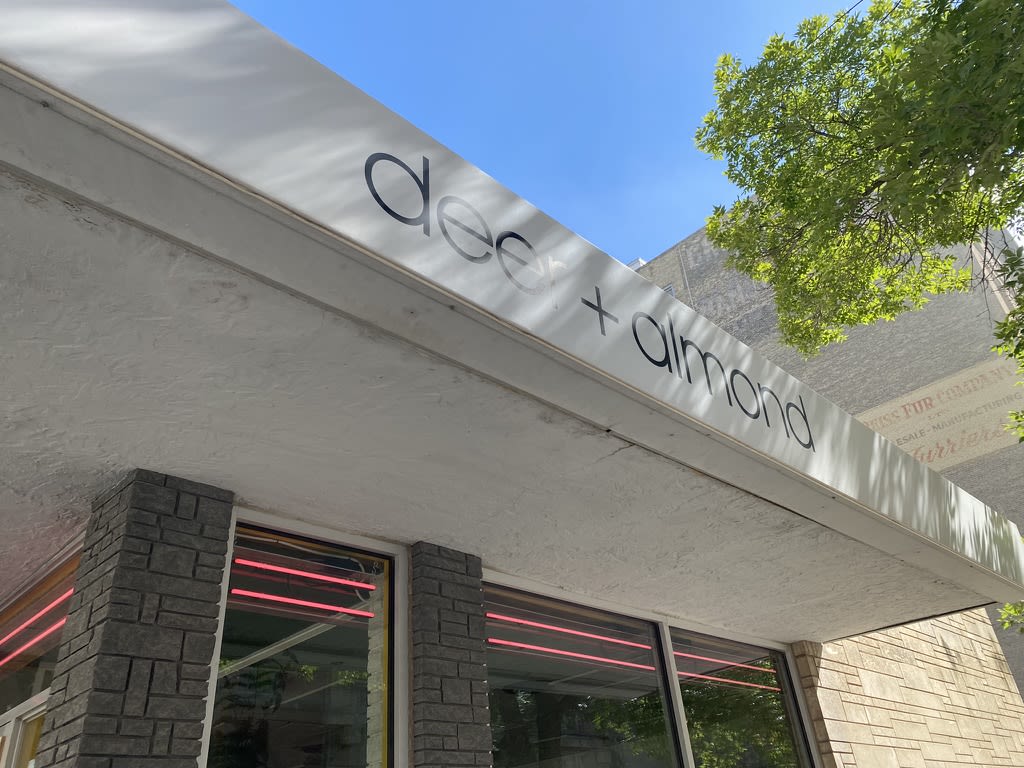
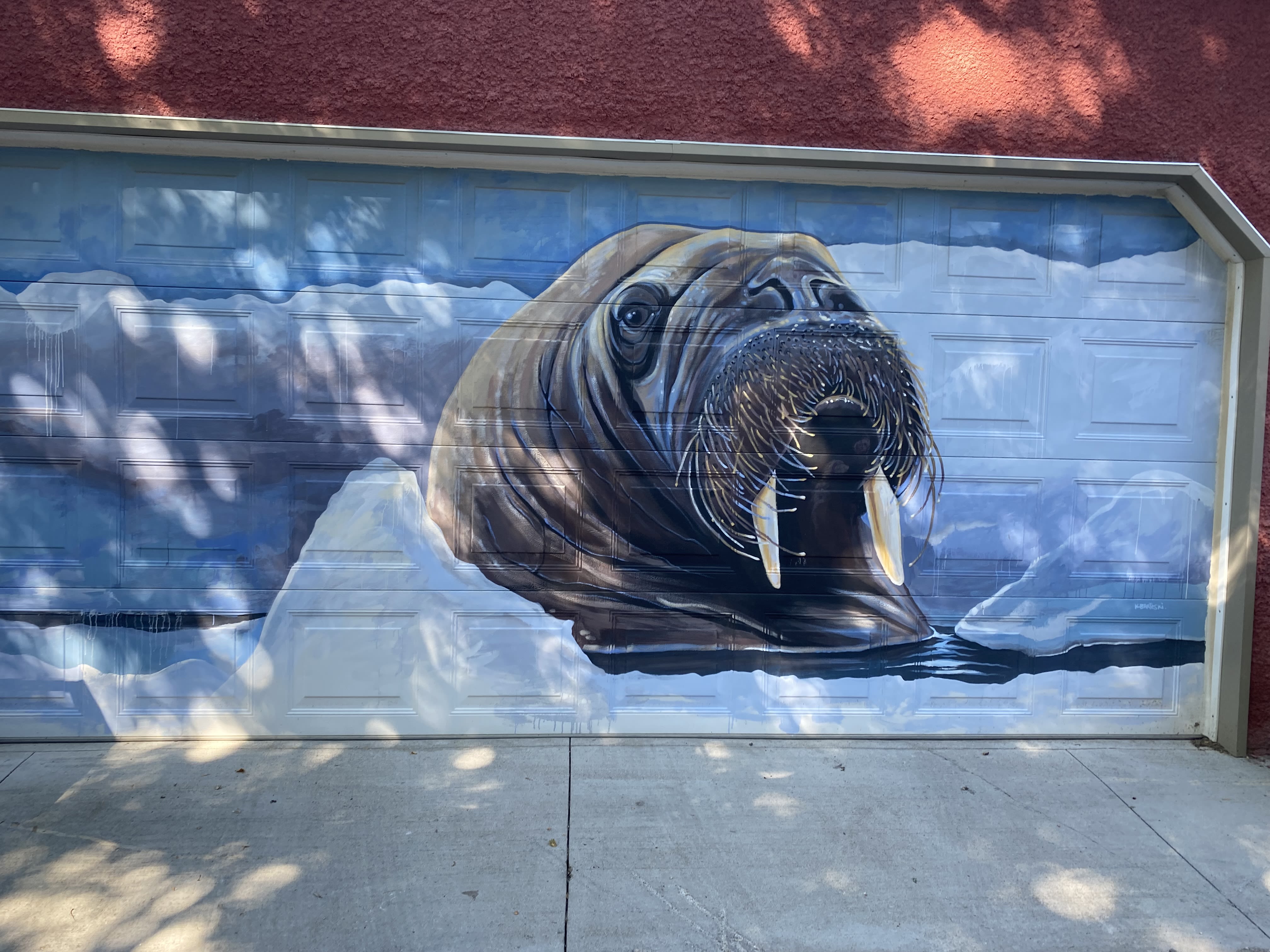

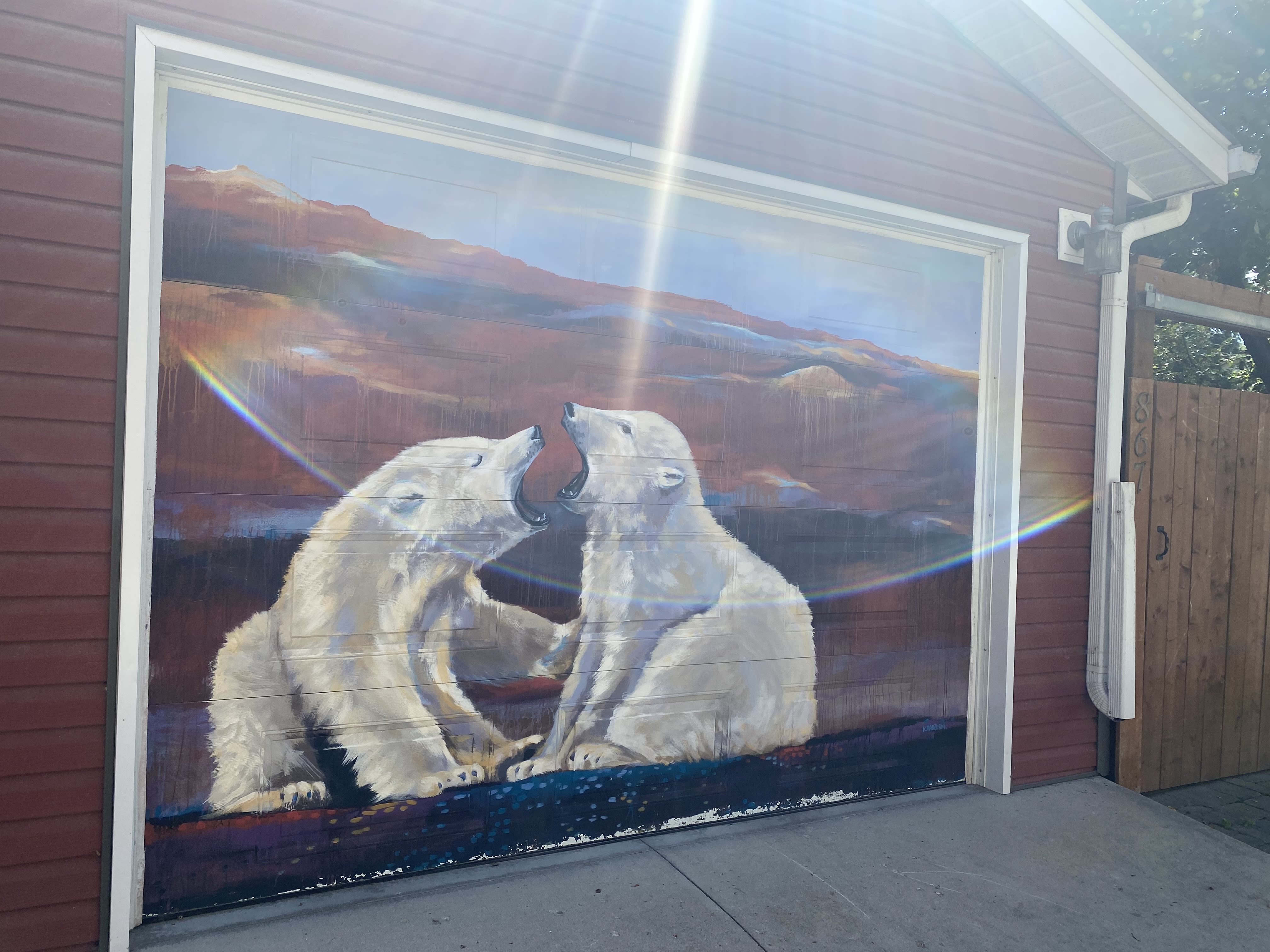
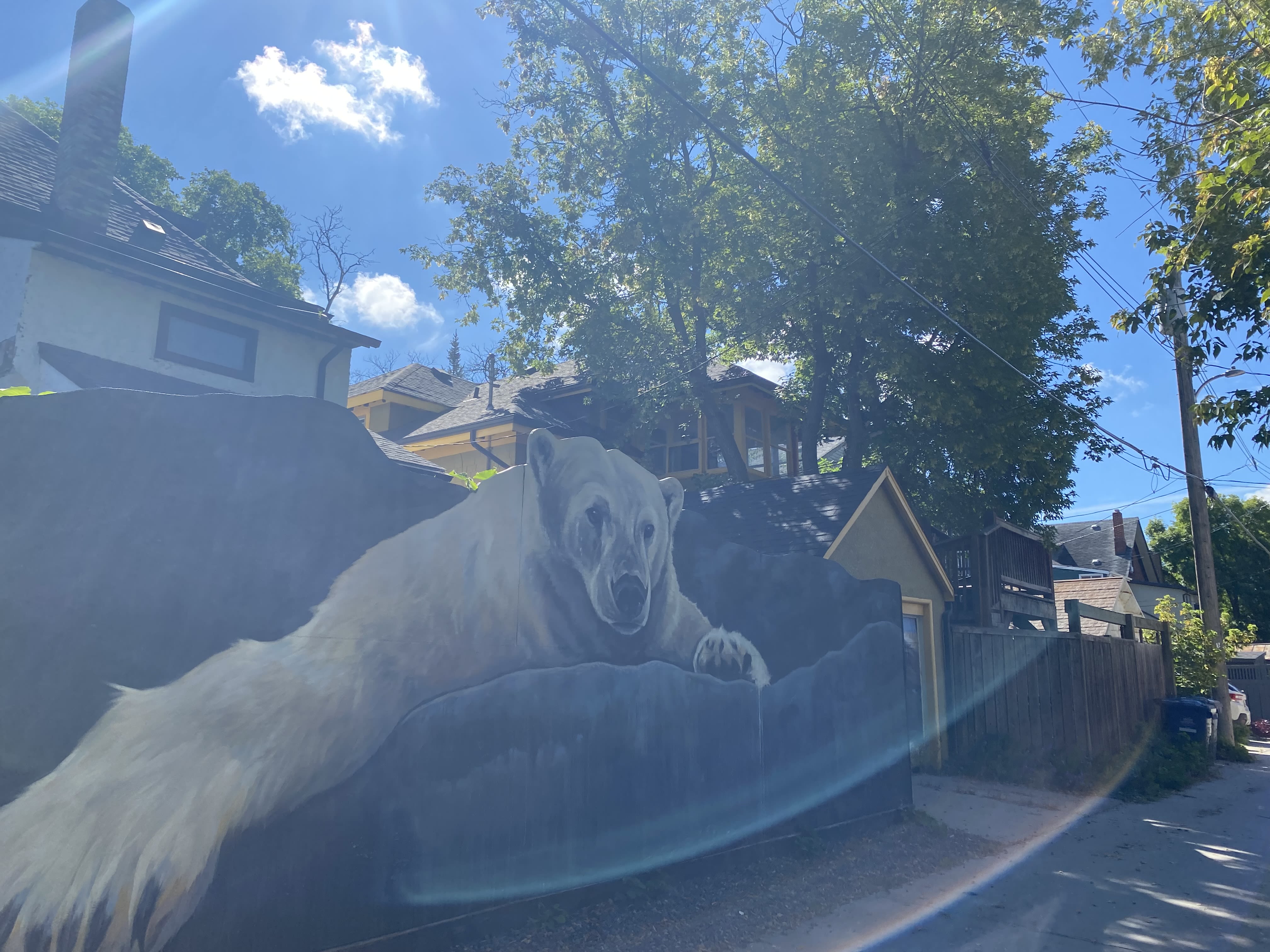
Meet Kal Barteski
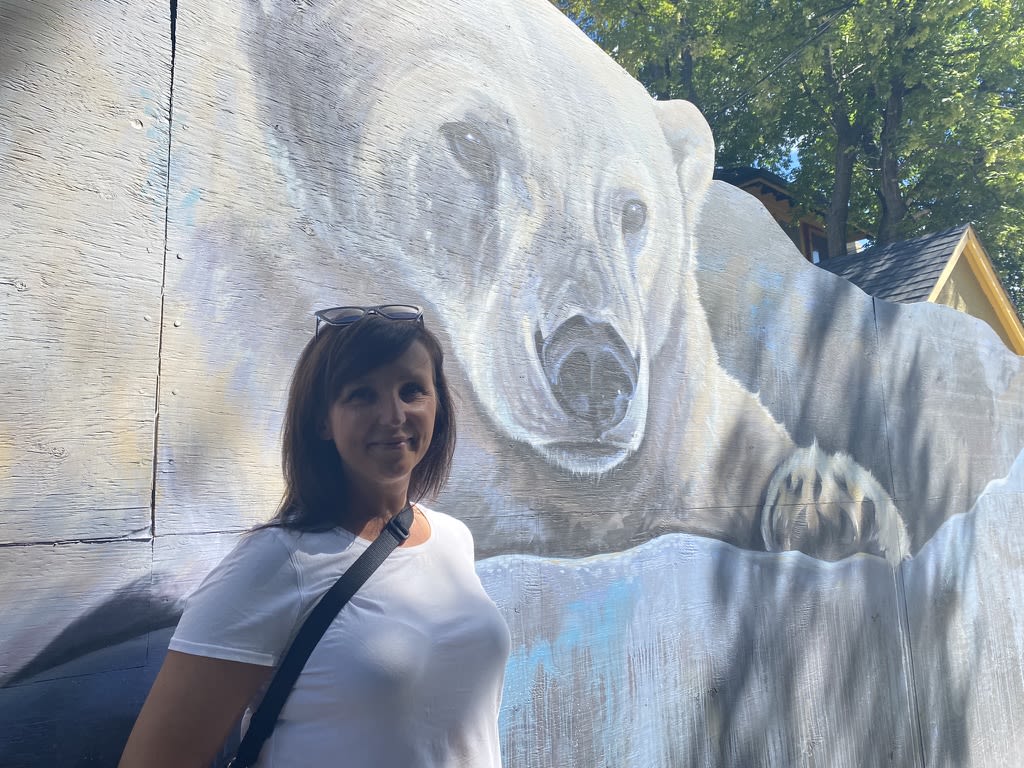
I meet Kal in her West End neighbourhood on a beautiful sunny afternoon. She leads me to a back alley where we almost immediately spot a polar bear.
Welcome to Back Alley Arctic, an outdoor gallery that not only showcases Kal's artistic chops but also her knack for community building.
A little back story: Kal is known as a polar bear artist, painting line drawings of polar bears as well as beautiful canvases. She became intrigued by the beautiful animals as a student and her love was cemented when she visited Churchill in northern Manitoba and was able to see the bears in the wild.
"We couldn't even get off the plane when we landed because there was a bear they were chasing off the runway," Kal said. "I was like, 'this is insane, there's the world's largest predator right there. This is amazing.'"
Kal has now been to Churchill many times and is a strong advocate for polar bear conservation and a supporter of the town. You can read the entire story in our article The Churchill Connection.
In 2017, she organized a group of mural artists to go to Churchill and paint murals all over the city as part of the SeaWall Project.
In preparation for painting a mural, which at that point she had never done, Kal decided to paint her garage as practice.
Her neighbour saw and asked if Kal could paint their garage too. The idea just snowballed from there. Kal asked for no compensation and provided the material and the hours of labour for free.
"I said I can paint any arctic animal of your choice for free, but if you want something different it is going to be $10,000," she laughs, And so Back Alley Arctic was born.
There are polar bears and walruses, caribou and lynx, belugas and snowy owls. Some paintings are large and take up entire garages or fences, others are small cutouts.
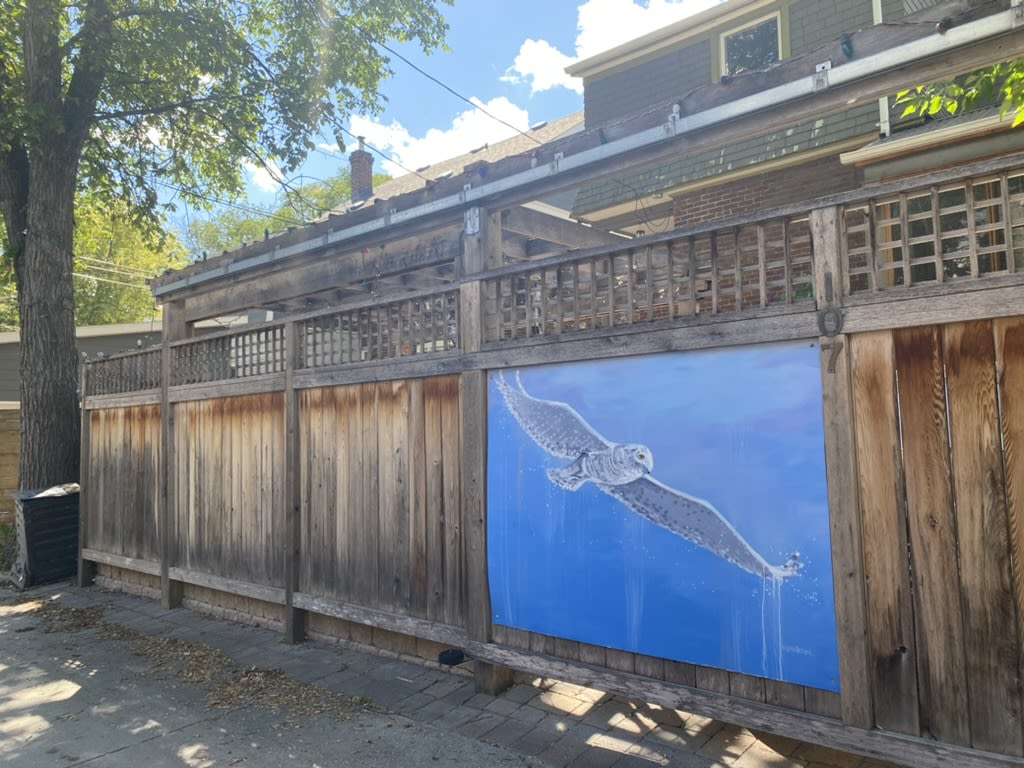
With each new painting, the neighbourhood would come out and learn about the animal and about each other. It has become a community-building project as the neighbours started to connect more. And even if they don't know someone's name, Kal says they know their animal.
"We'll say, 'Oh, here come the Lynxs' for example," Kal says. "It has been wonderful."
Back Alley Arctic is located in an alleyway of Canora and Ethelbert Street between Wolseley and Westminster. While visitors are encouraged to come and walk through the alleyway and picture-taking is allowed, please remember this is a residential neighbourhood. To support Kal's conservation efforts, you can visit the Polar Bear Fund.
Meet Kal Barteski

I meet Kal in her West End neighbourhood on a beautiful sunny afternoon. She leads me to a back alley where we almost immediately spot a polar bear.
Welcome to Back Alley Arctic, an outdoor gallery that not only showcases Kal's artistic chops but also her knack for community building.

A little back story: Kal is known as a polar bear artist, painting line drawings of polar bears as well as beautiful canvases. She became intrigued by the beautiful animals as a student and her love was cemented when she visited Churchill in northern Manitoba and was able to see the bears in the wild.
"We couldn't even get off the plane when we landed because there was a bear they were chasing off the runway," Kal said. "I was like, 'this is insane, there's the world's largest predator right there. This is amazing.'"
Kal has now been to Churchill many times and is a strong advocate for polar bear conservation and a supporter of the town. You can read the entire story in our article The Churchill Connection.
In 2017, she organized a group of mural artists to go to Churchill and paint murals all over the city as part of the SeaWall Project.
In preparation for painting a mural, which at that point she had never done, Kal decided to paint her garage as practice.
Her neighbour saw and asked if Kal could paint their garage too. The idea just snowballed from there. Kal asked for no compensation and provided the material and the hours of labour for free.
"I said I can paint any arctic animal of your choice for free, but if you want something different it is going to be $10,000," she laughs, And so Back Alley Arctic was born.

There are polar bears and walruses, caribou and lynx, belugas and snowy owls. Some paintings are large and take up entire garages or fences, others are small cutouts.

With each new painting, the neighbourhood would come out and learn about the animal and about each other. It has become a community-building project as the neighbours started to connect more. And even if they don't know someone's name, Kal says they know their animal.
"We'll say, 'Oh, here come the Lynxs' for example," Kal says. "It has been wonderful."
Back Alley Arctic is located in an alleyway of Canora and Ethelbert Street between Wolseley and Westminster. While visitors are encouraged to come and walk through the alleyway and picture-taking is allowed, please remember this is a residential neighbourhood. To support Kal's conservation efforts, you can visit the Polar Bear Fund.
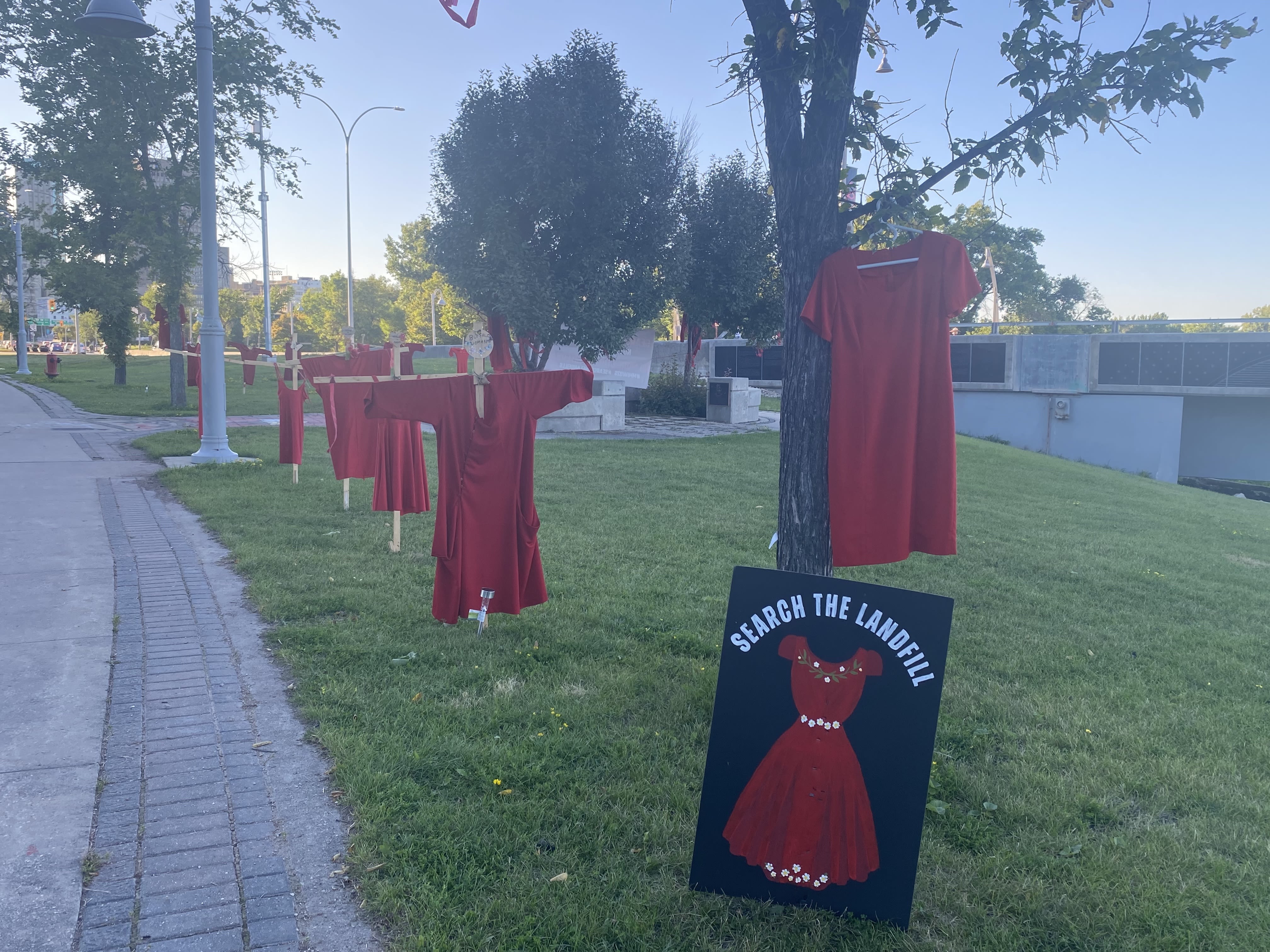
Indigenous Voices
Set up in the shadow of the impressive Museum for Human Rights near Esplanade Riel, the pedestrian bridge that crosses the Red River is Camp Marcedes.
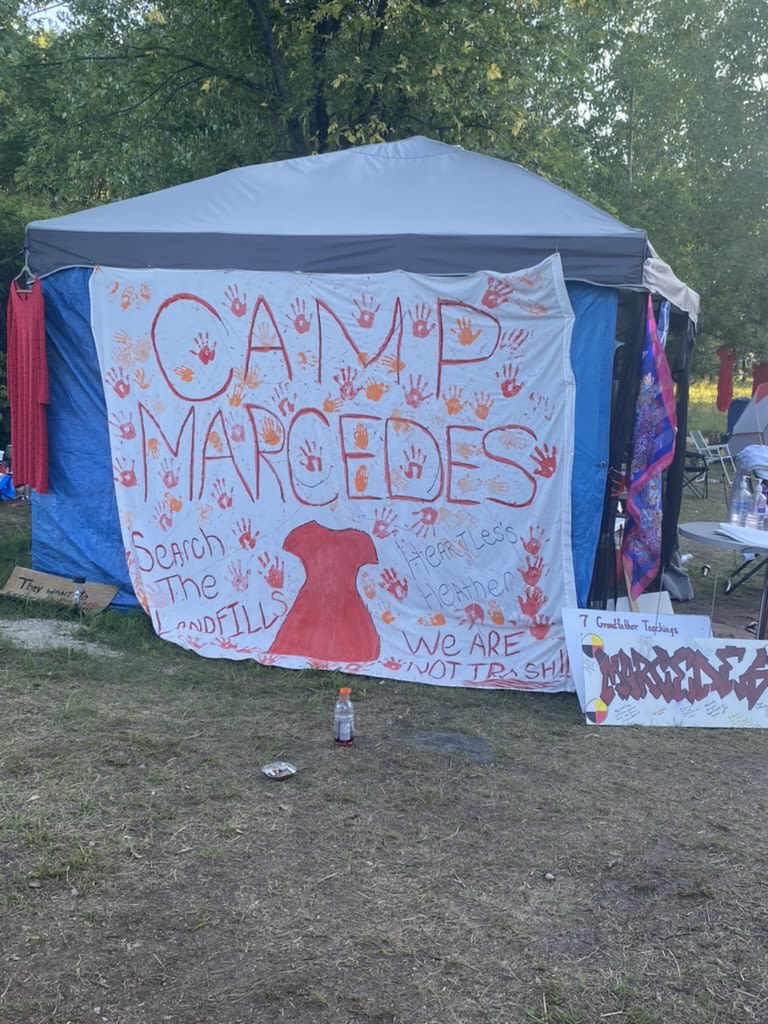
A sacred fire burns while community members chat, paint, and hold space. It is a movement that demands justice for two murdered Indigenous women, Morgan Harris and Marcedes Myron. Authorities believe their bodies are in local landfills but the government of Manitoba has thus far refused to search the sites, citing safety concerns.
"We are here to get justice for our women," one of the community members tells me. She invites me to sit with her but asks that I not use her name. "We have a right to be here, this is our land."
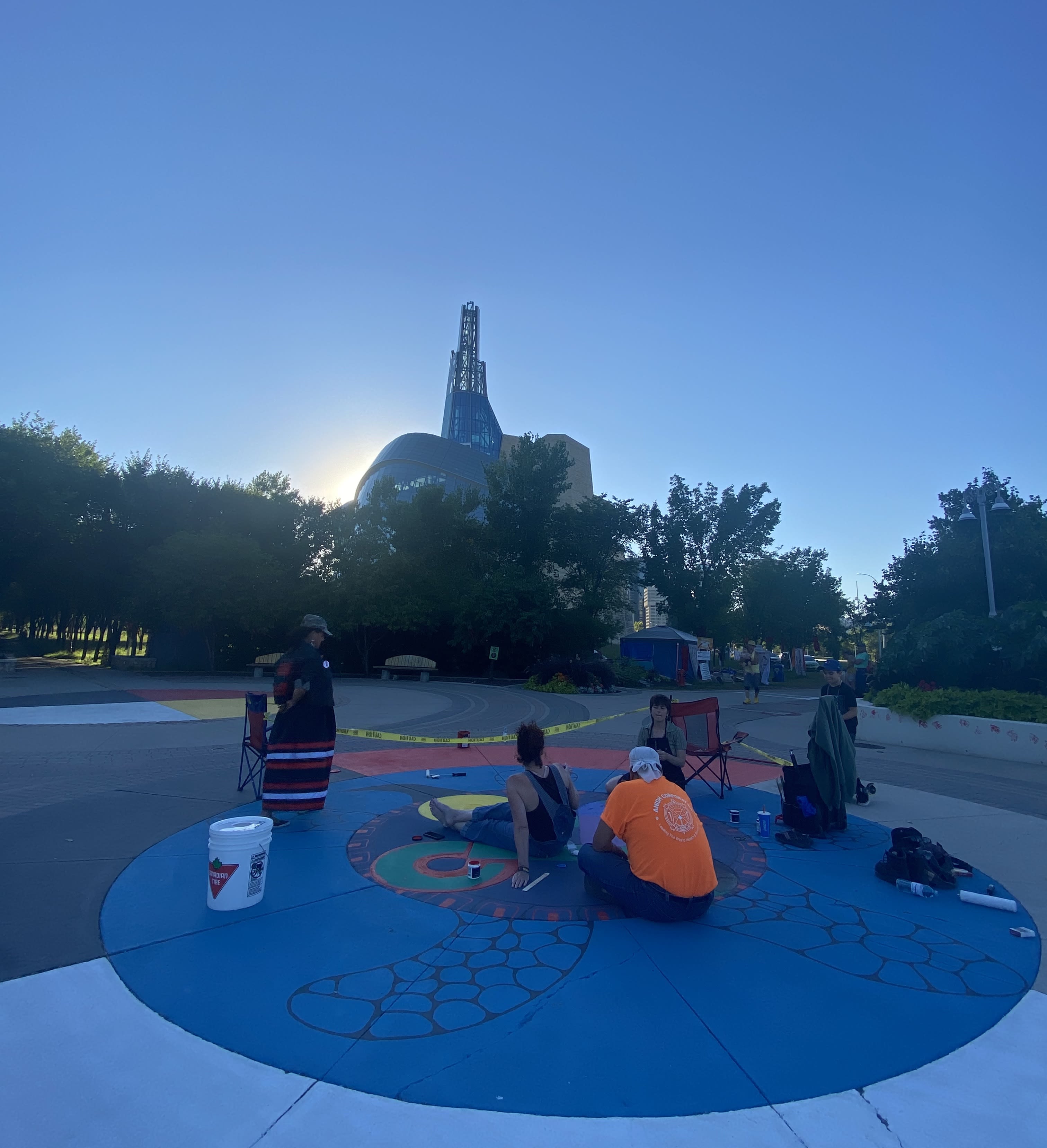
The continued lack of safety for and violence toward Indigenous Women and Girls is an ongoing national crisis and efforts to bring awareness to the issue are scattered throughout the city. Red handprints line on sidewalks and bridges, red dresses flap in the wind, and thousands of red ribbons are tied to trees with the names of lost women.
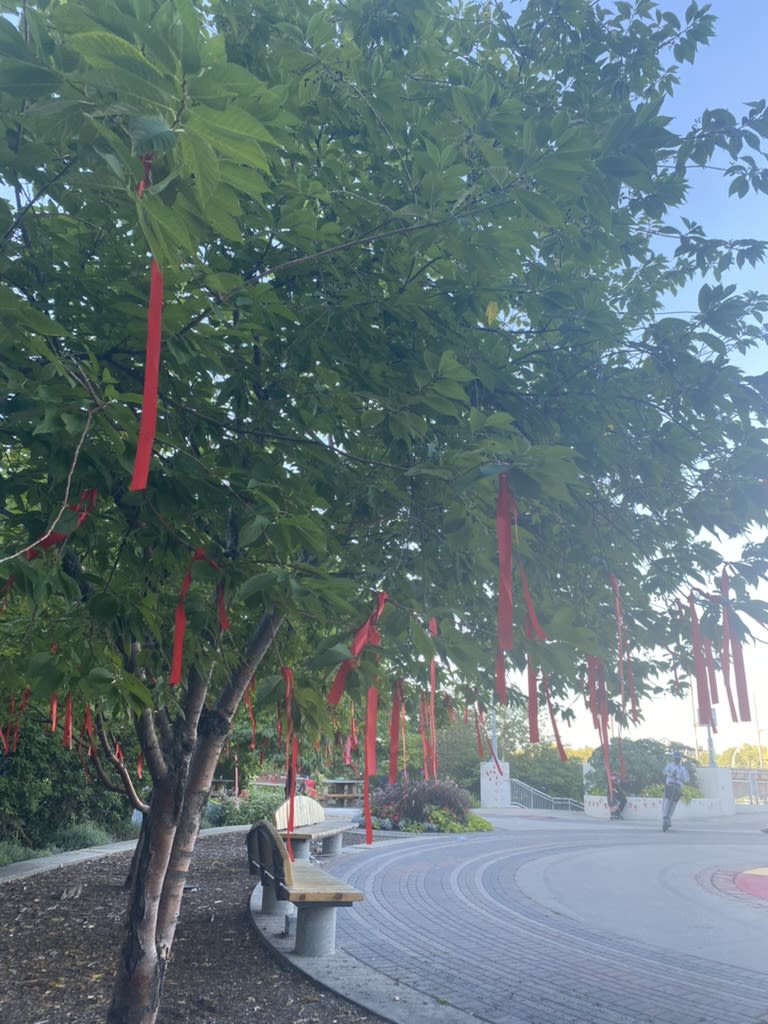
To learn more about the issue, visit the National Inquiry into Murdered and Missing Indigenous Women and Girls or the Pathway to Healing program set up by the Southern Chiefs.
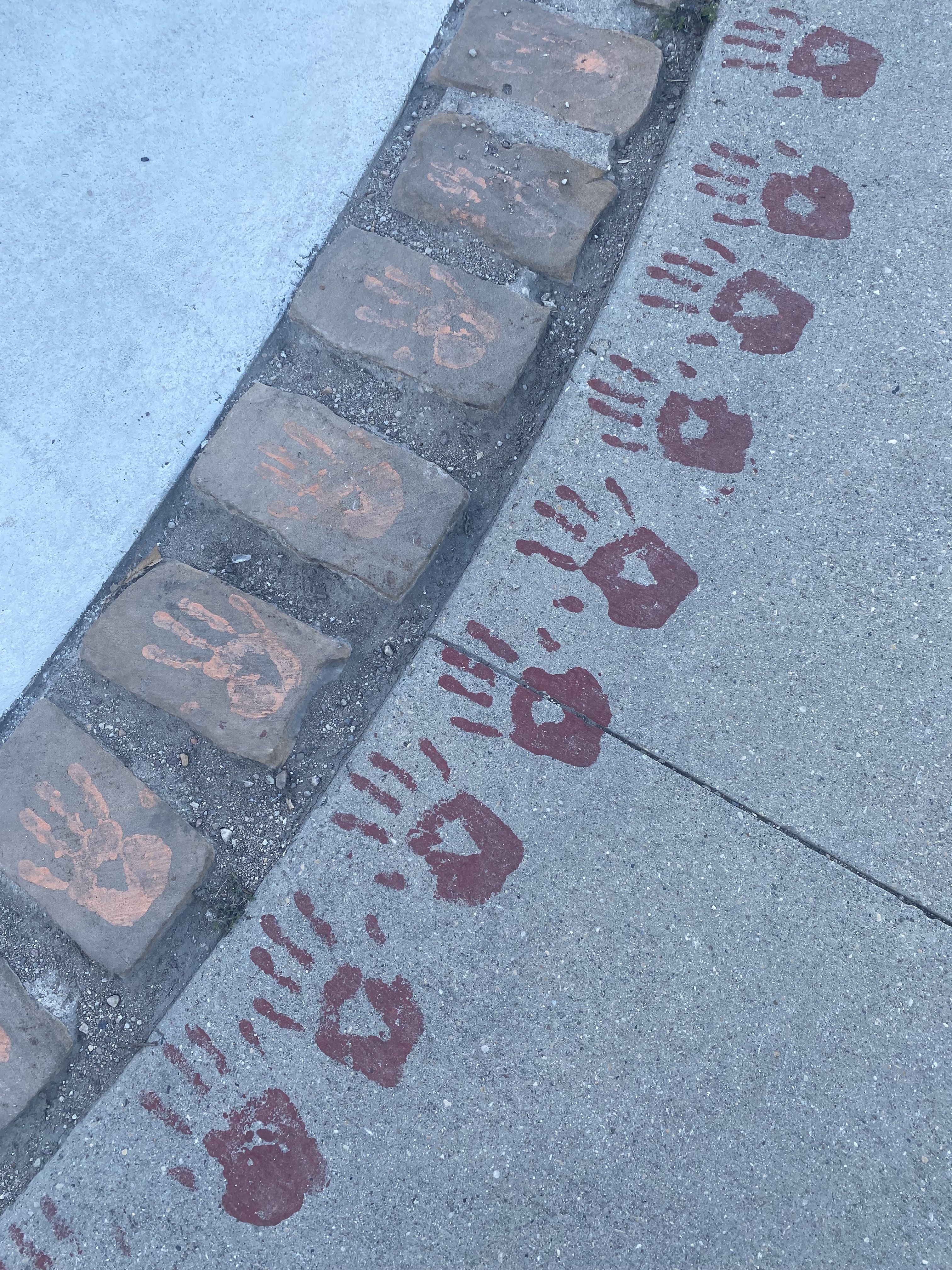
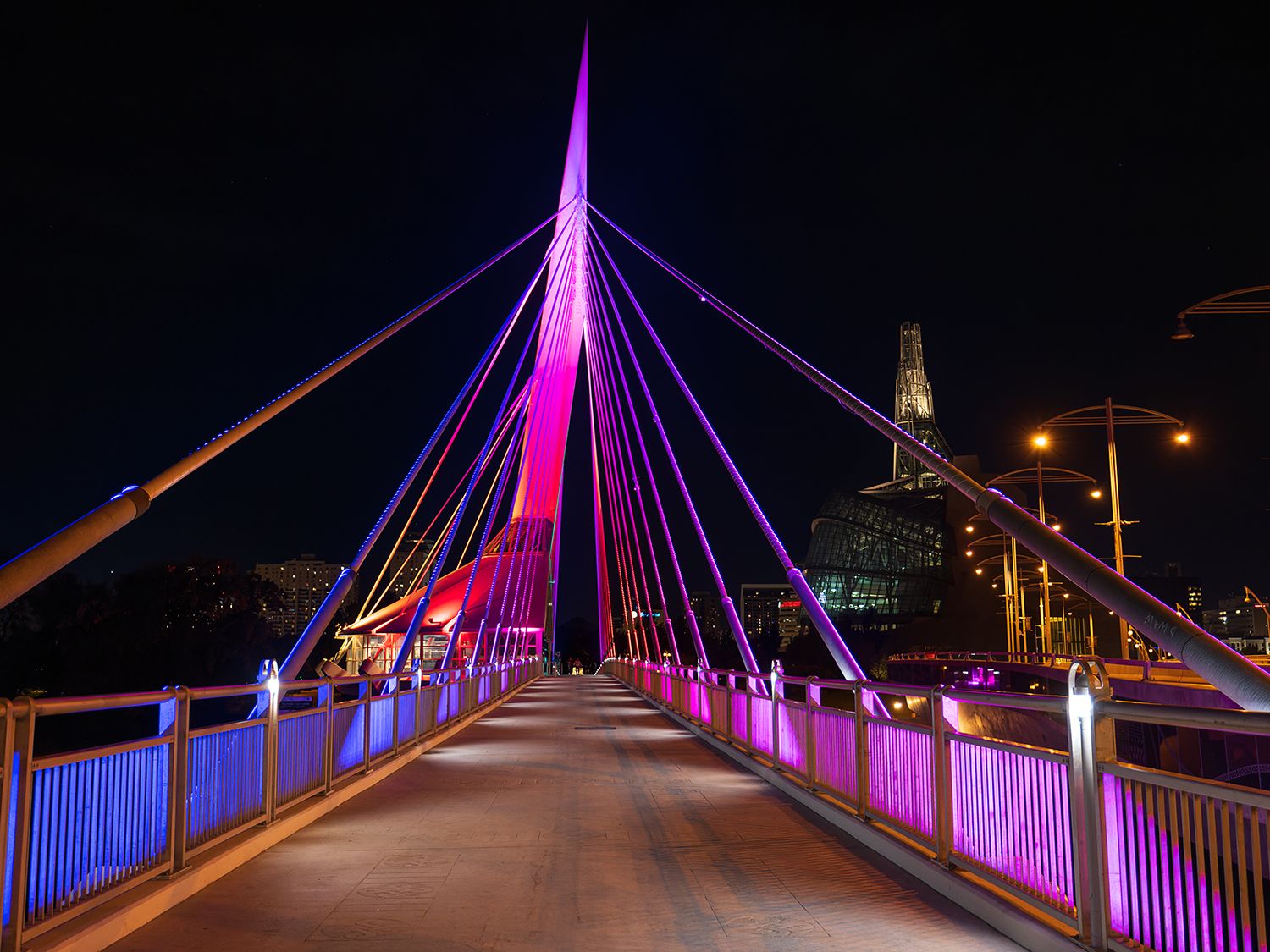
Photo: Salvador Maniquiz/Tourism Winnipeg
Photo: Salvador Maniquiz/Tourism Winnipeg
My visit to Winnipeg coincided with Folkarama, the world's largest and longest running multicultural festival. It showcases the diversity of nationalities that make up the city. I was invited to the incredible showcase in the First Nations Pavilion.
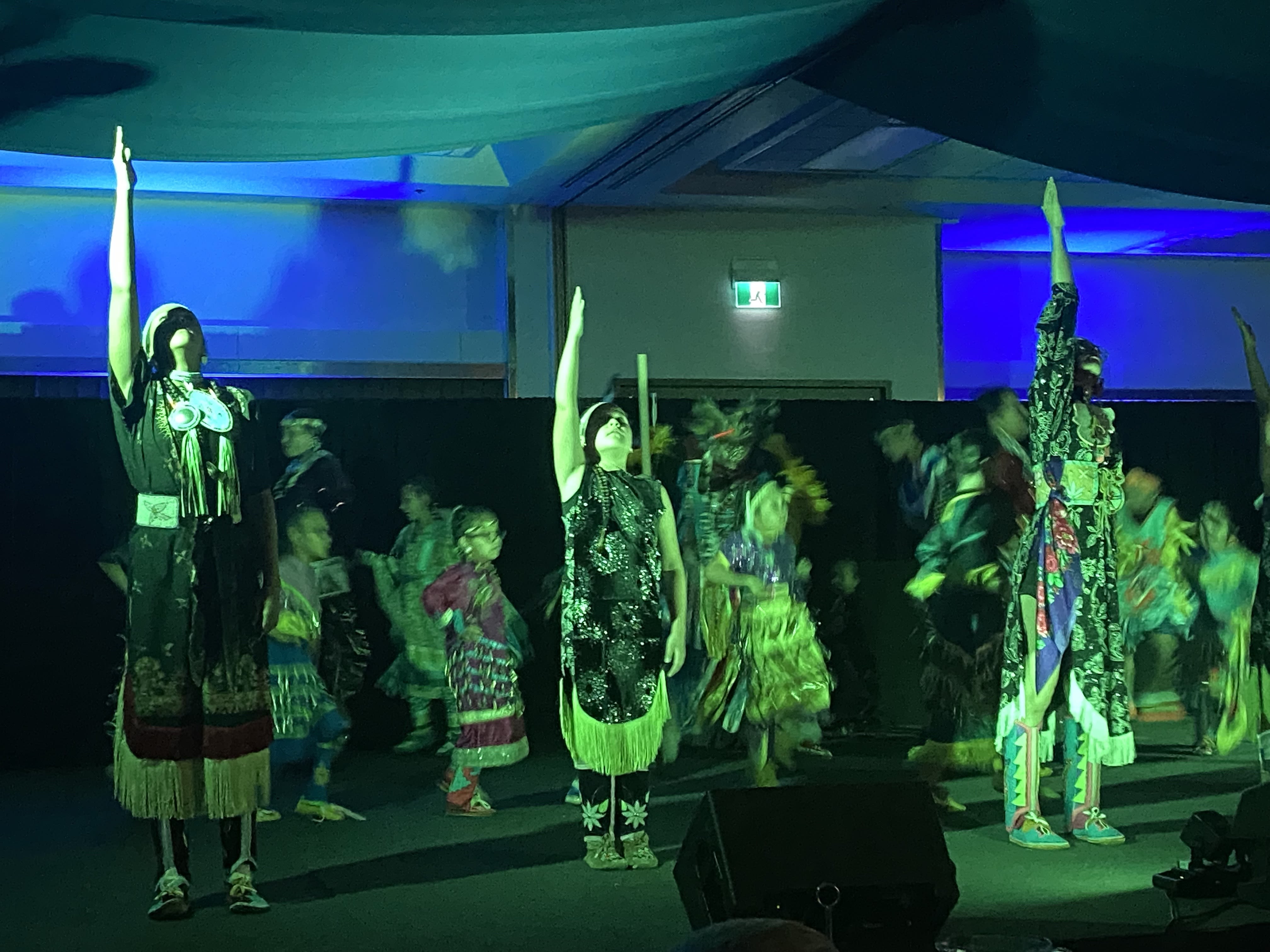
Buffy Handel, a Winnipeg-based dancer and choreographer welcomed me to the event. As owner of the Aboriginal School of Dance, Buffy is the creative mind behind the powerful show.
Food served at the event included Bison Stew, Bannock, "Indian Tacos" (with fry bread instead of tortilla), and a delicious Wild Rice Salad made with kale, wild rice, butternut squash, seeds, feta, and maple dressing.
Vendors were also selling handmade jewelry, clothing, and art.
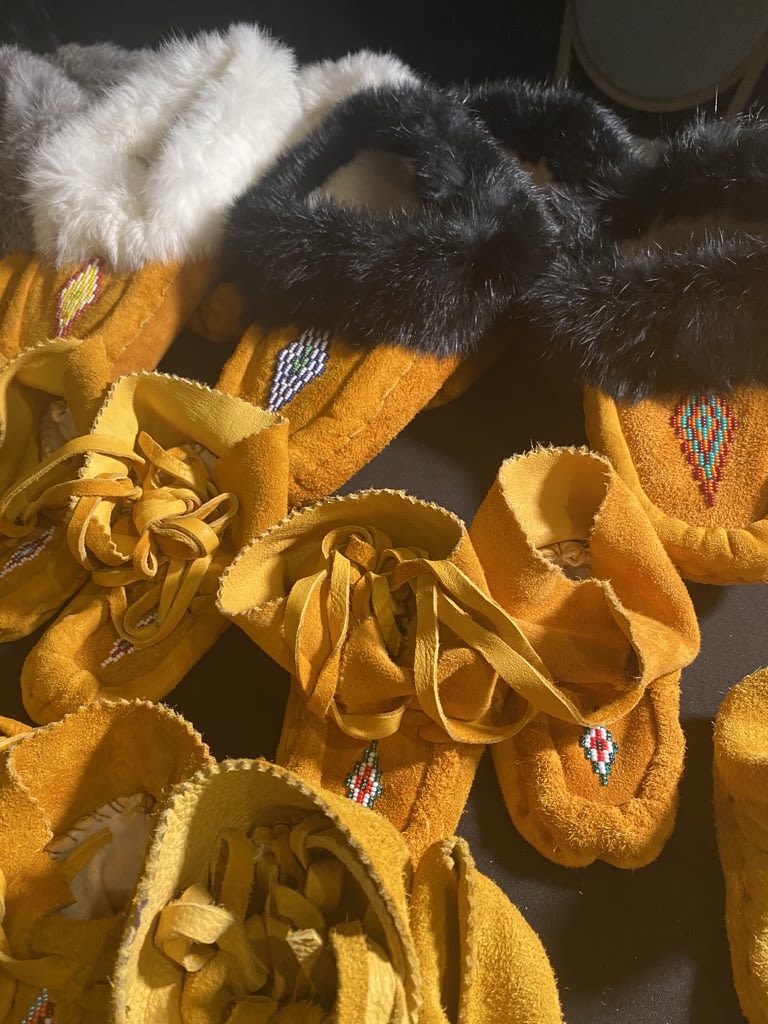
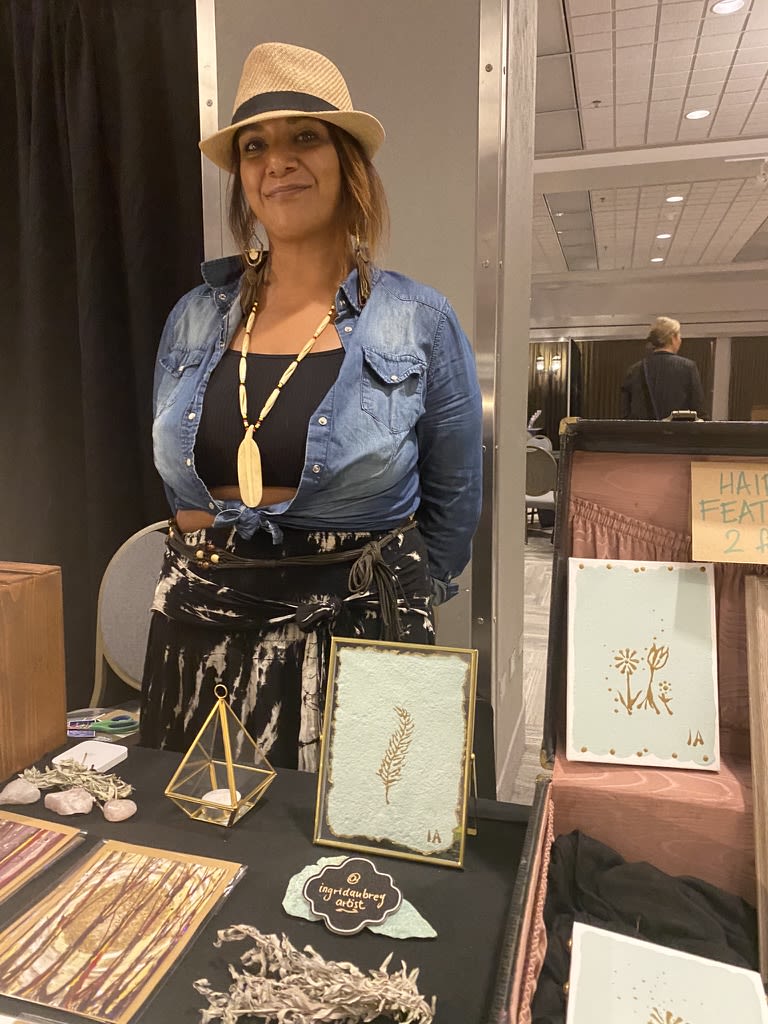

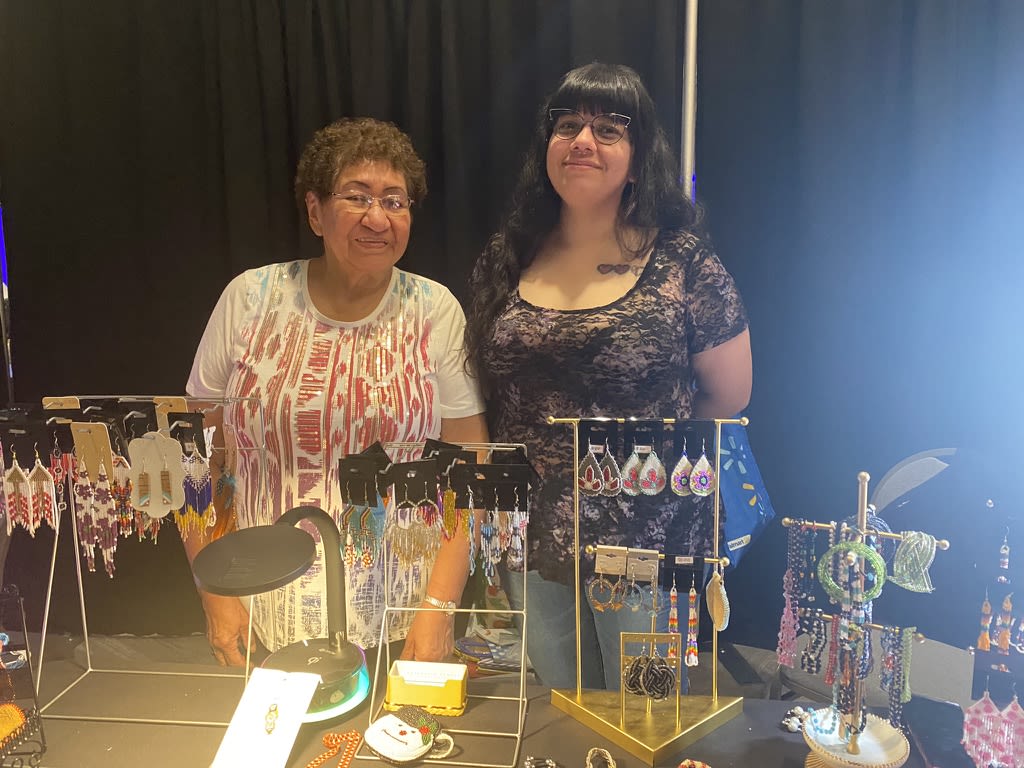
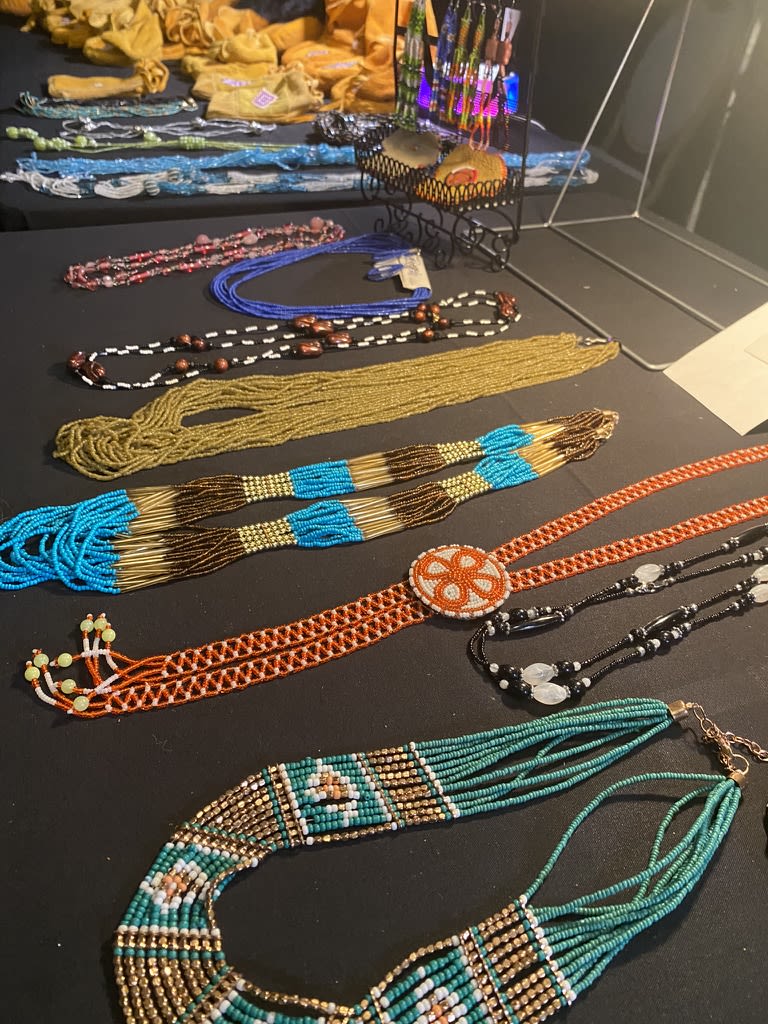

Moccasins by Aurelia & Family
Moccasins by Aurelia & Family

Artist Ingrid Aubrey
Artist Ingrid Aubrey

Art by Ingrid Aubrey
Art by Ingrid Aubrey

Aurelia and her granddaughter Samantha. Check out their artwork.
Aurelia and her granddaughter Samantha. Check out their artwork.

Jewellery by Aurelia & Family
Jewellery by Aurelia & Family
Meet Lennard Taylor
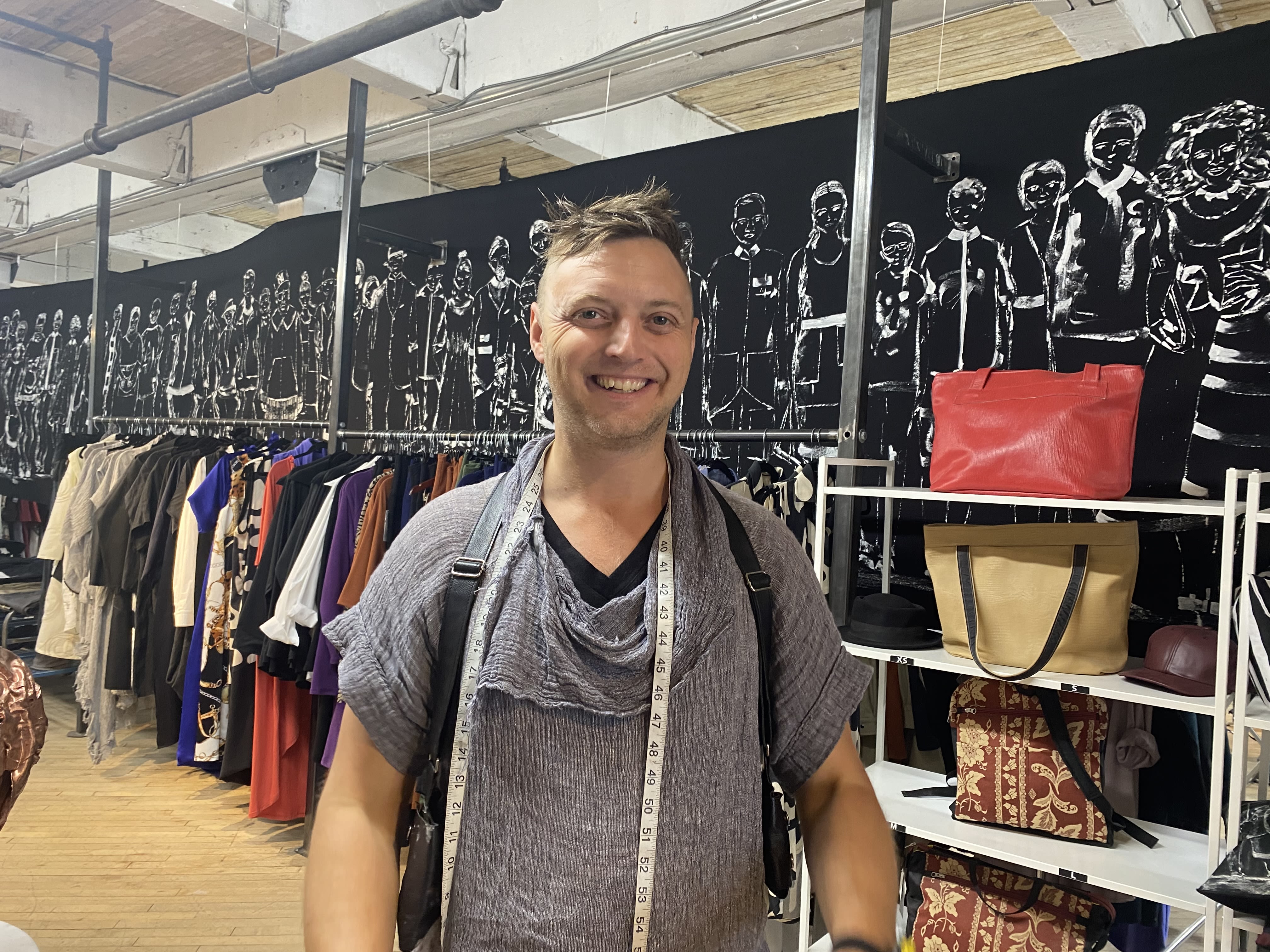
"My goal is to transform the way you look and feel with clothing," Lennard tells me upon introduction. I am visiting his boutique clothing studio in Winnipeg's historic Exchange District.
The Winnipeg-based brand is a zero-textile waste and sustainable clothing company that reflects Lennard's values and supports his advocacy work.
In addition to his clothing line and the art pieces made with textile waste, Lennard is working on a big art show that will brings to light the destructive and unsustainable nature of fast fashion.
"Clothing is our second skin, it's how we tell the story of our lives, it's how we live our lives. And a lot of us, especially in North America, have absolutely zero idea of how clothing comes to be in our closets."
To learn more about Lennard's values and work, please click here.
Getting to Winnipeg
Located in central Canada, Winnipeg is easily accessible from any part of the country. I arrived from Toronto, on a quick and easy two-and-a-half-hour flight. From Vancouver, the flight time is under three hours; from Halifax, it is four.
Winnipeg is also on VIA Rail's The Canadian route and it is the start of the train journey to Churchill.
Upon arrival at the airport, I hopped on a Winnipeg Transit bus to head downtown. The stop is conveniently located just outside the terminal.
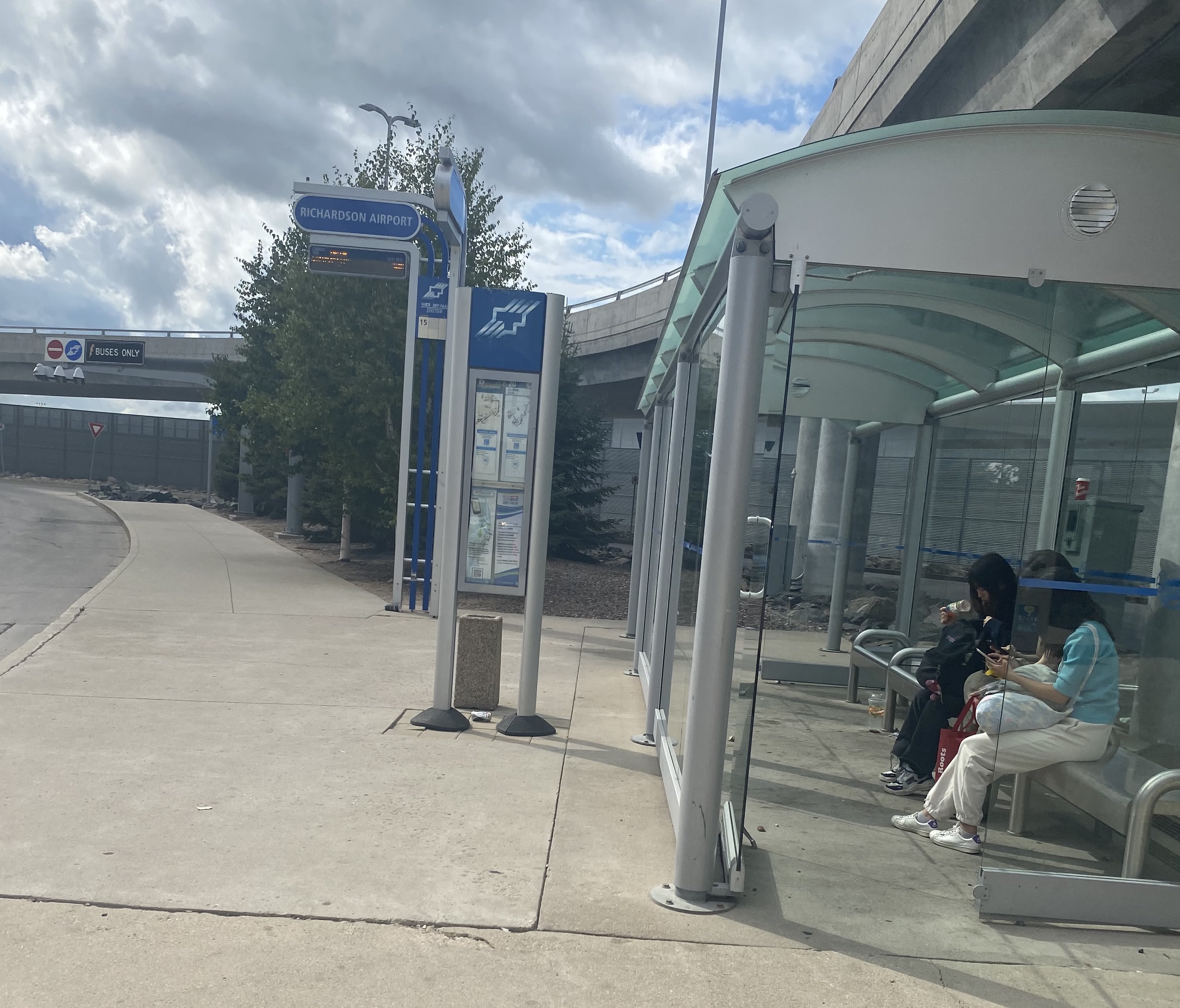
For bus schedules, you can visit here.
The airport also has car rentals, taxis, and ride-share options, such as Uber.
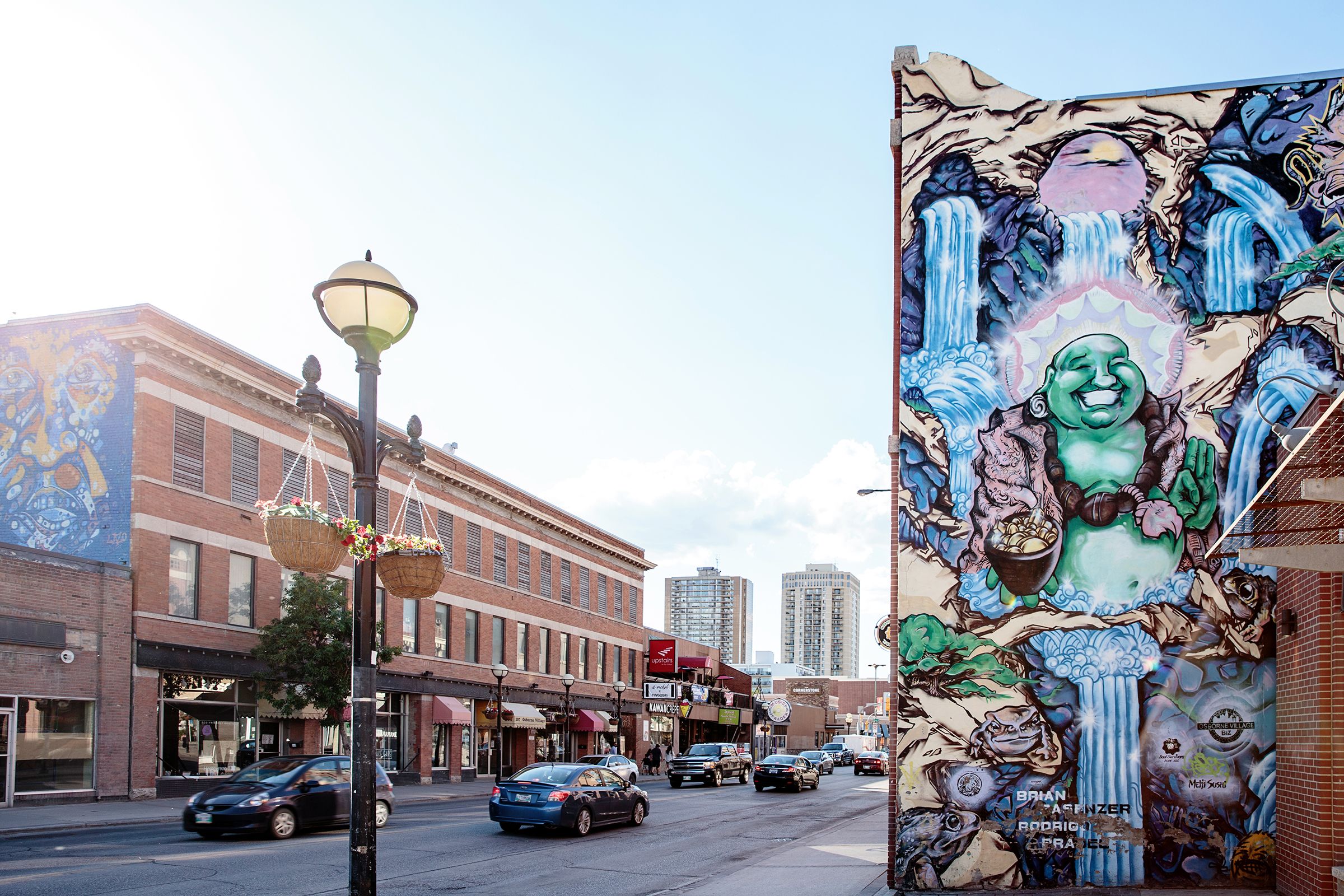
Places not to miss
The Museum For Human Rights
An incredible and powerful space, the Museum for Human Rights is an absolute must-see when visiting Winnipeg.
The Leaf
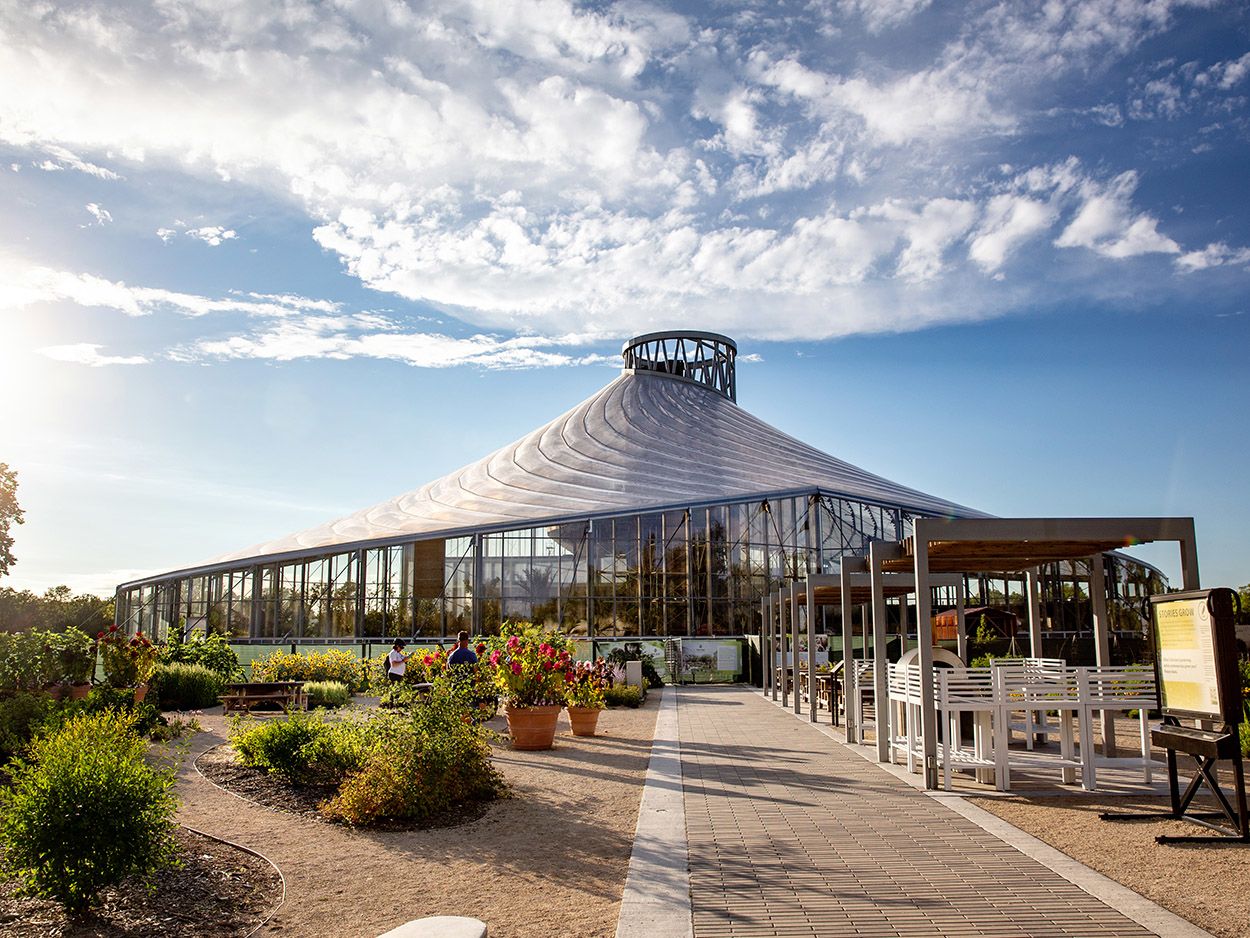
Photo by William Au/Tourism Winnipeg
Photo by William Au/Tourism Winnipeg
The Leaf at Assiniboine Park is a new indoor and outdoor horticultural attraction with a Mediterranean Biome, a Tropical Biome and a Butterfly garden.
Qaumajuq at WAG
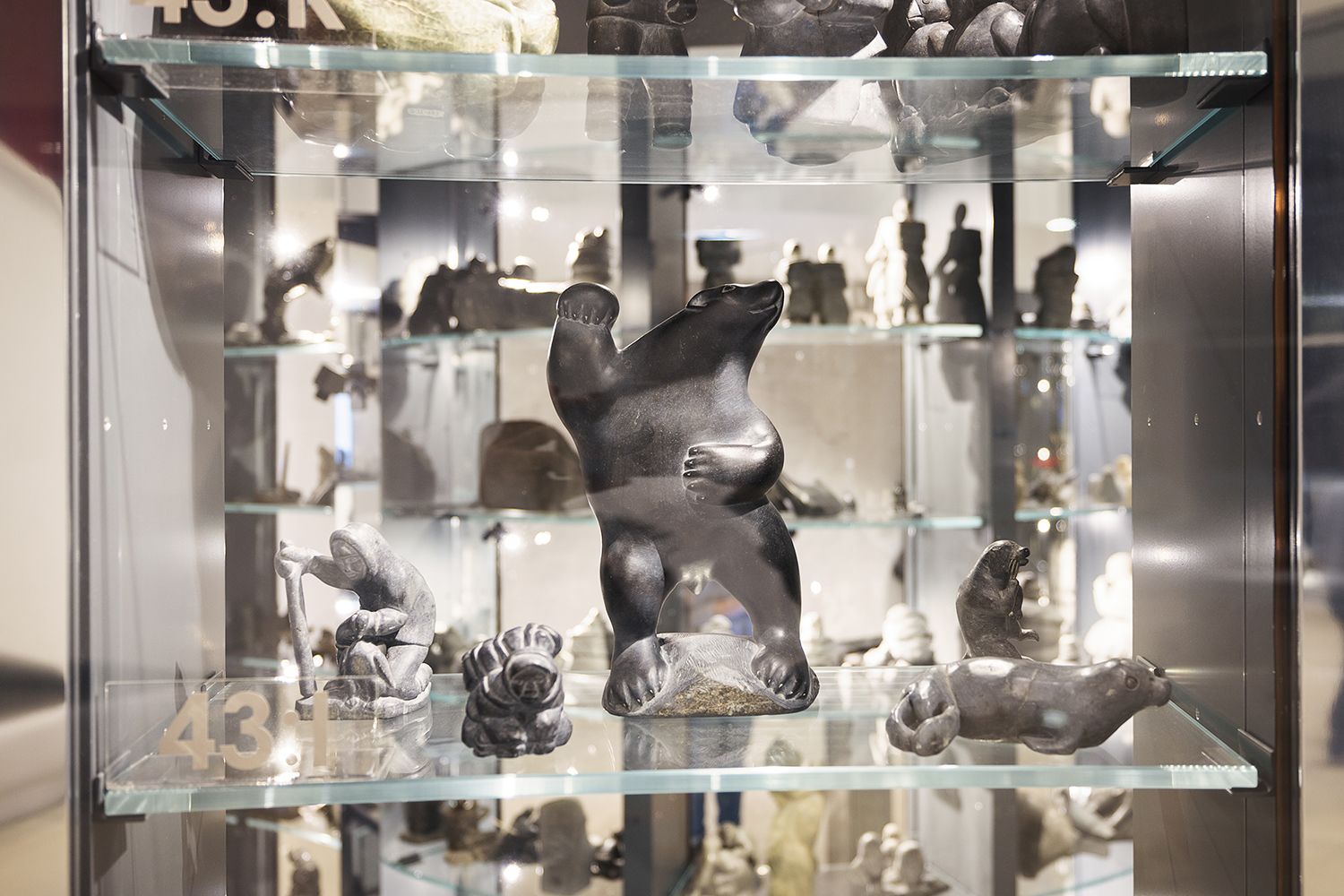
Photo by Salvador Maniquiz/Tourism Winnipeg
Photo by Salvador Maniquiz/Tourism Winnipeg
Qaumajuq at the Winnipeg Art Gallery is home to the largest public collection of contemporary Inuit art in the world.
Books to Read
We asked independent Winnipeg bookshop, McNally Robinson Booksellers, for their top books about Winnipeg. If you're looking for some reading material before your trip, please see this list with links to purchase the books from McNally Robinson.
A Diminished Roar by Jim Blanchard
Imagined City by David Arnason & Mhari Mackintosh
Imagining Winnipeg by Esyllt Jones
The Lesser Known by Darren Bernhardt
Manitoba Walks & Scenic Drives by Wendy Wilson & Leone Banks
Winnipeg 1912 by Jim Blanchard
